photography
Travel Fees for Photographers: A Comprehensive Guide
The average range photographers charge for travel fees is between $150 and $200; there are other factors you should consider before setting a fixed price. If you're going overseas to cover a wedding or, due to the nature of the job, have to take on more gear than you usually would, that pricing structure above may prove ineffective.

Element Photo
Published on
Nov 10, 2023
Understanding how much to charge for travel fees as a photographer is an important question that only you can answer.
In this article, we will discuss the intricacies of travel fees for photographers and explore how Element Photo is revolutionizing the way photographers handle payments, invoicing, and the tracking of expenses.

Pricing Structure for Travel Fees
When it comes to travel fees, the standard pricing range that many photographers adhere to typically falls within the range of $150 to $200.
For instance, in the case of destination weddings, you need to account for travel expenses, accommodation, and logistics. This pricing model proves valuable.
Travel Fee Per Mile for Photographers
When determining your travel fee per mile, it's essential to note that the general range falls between $0.50 and $1.50. However, the precise amount you should charge is contingent upon factors such as your level of expertise and skill set.
Photographer Travel Fee Calculator
There are three ways to set a travel fee:
Per mile : If you've decided the amount you want to charge per mile, the next step would be to calculate the number of miles you're going to travel and multiply that by your rate per mile.
Per hour: This works the same way. Simply set a rate per hour and multiply it by the number of hours worked. This is typically not advisable because it can be difficult to distinguish between the hourly travel rate and the job fee.
Fixed rate: This is ultimately the best way to navigate travel fees as a photographer. If you're unsure how to fix this, get a ballpark figure by using the per-mile method.
These approaches ensure that you are appropriately compensated for your work, while your clients benefit from a transparent and equitable pricing structure that reflects the extra financial aspects associated with travel.
Increasing Productivity with Element Photo
It is normal for photographers to go above and beyond, both physically and figuratively, in order to capture beautiful images at various locations and destinations.
Thus, because travel costs can make up a sizable portion of your costs, Element Photo has made payment and tracking easier, enabling you to effectively manage your funds while travelling for a job.
Invoicing and Payment using Element Photo
Element Photo is a website specifically designed for photographers. It provides a wide range of tools to help photographers manage their clients, present their work, and simplify the financial side of their business. One notable feature that is especially helpful if you usually deal with travel expenses on a regular basis is Element Photo's effective invoicing and payment system.
Photographers frequently have to ask customers or event organizers for travel expenses when they set out on photography gigs. Element Photo gives photographers an easy-to-use, effective way to create professional invoices, making the billing process clear-cut, efficient, and trouble-free. This is how it operates:
Simple Invoice Creation: Element Photo is excellent at giving you the tools you need to create and send invoices. These invoices include all pertinent information, such as the required travel costs, the dates of payment, and an itemized list of all the charges. In addition to streamlining the payment procedure, this degree of professionalism fosters openness and trust between you and your clients.
Automated Reminders : Keeping track of multiple invoices can be a laborious task, particularly for photographers who are primarily concerned with honing their craft. In order to overcome this difficulty, Element Photo uses customized reminders for payments. This essential feature ensures that travel costs are received on time by reducing the likelihood of late payments.
Monitoring Expenses : Element Photo provides you with even more power by including a user-friendly function for tracking expenses. With the help of this function, you can effectively organize your spending and obtain insightful knowledge about your spending habits and budget while traveling. It is essential to keep track of these charges in order to successfully manage travel expenses and make the necessary adjustments as needed.
Notes and Updates
Element Photo understands the value of seamless communications between photographers and their clients, especially when discussing financial matters, as the cornerstone of controlling travel fees and related expenses.
Client Notes : As a photographer, you can add helpful notes and messages to your invoices using Element Photo. This feature can be very helpful in explaining how travel fees are broken down or in giving bank details, payment terms, and refund policies, along with shedding light on the costs to be incurred while working on the job. It increases openness and makes it possible for you to explain the financial aspects of your work in detail.
Real-time Updates : Photographers and their clients may work together in real-time thanks to Element Photo. As clients interact with invoices within the platform, you receive immediate updates. This increased degree of openness makes sure that everyone is always in agreement, which lowers miscommunication and builds trust.
Navigating Travel Costs in Photography
The choice of destination, accommodation, transportation, equipment, permits, insurance, daily expenses, and sometimes hidden fees all influence the photographer's budget. In this section, we'll dissect the dynamic travel costs and expenses for photographers, providing insights on how you can manage and optimize costs while ensuring you execute your job perfectly.
1. Location and Length
The first step in evaluating travel costs is deciding where to go and how far it will take to get there. The area of the world you choose to photograph is a major factor in how much your entire photographic journey will cost. Three general categories can be used to aggregate the costs related to different destinations:
Local or Domestic Travel : Travelling domestically can benefit photographers by offering cheaper airfare and simpler visa procedures. This decision does not, however, lessen the importance of budgetary considerations. Fuel, lodging, and entrance fees to national parks and other sites are examples of travel expenses.
International Journeys : Travelling to foreign countries can result in substantial increases in spending because of increased airfare, additional procedures for admission or a visa, and possibly higher living costs. You should consider the cost of applying for a visa, currency exchange rates, and any additional papers required for international travel.
Remote or Exotic Places : Remote locations could cost more than usual travel since they might need private plane chartering, special permits, or logistical arrangements that drive up prices.
2. Accommodation Dilemmas
Your choice of lodging while starting a photography gig might have a big impact on your budget. You should strike a careful balance between affordability and comfort.
3. Transport Expenses
The price of transportation includes more than simply your plane ticket. Various factors need to be taken into consideration, depending on the project and its location.
Airfare : Although flying is one of the quickest methods to get where you're going, you should look for discounts, make reservations well in advance, and factor in additional costs for photographic gear before checking out.
Road Transportation : You could require road transportation, depending on your objectives. Landscape photographers frequently rent cars, whereas urban photographers could use public transportation or hire local drivers. Examine your options for transportation and the related expenses.
4. Equipment Expenses
Extensive equipment is a hallmark of professional photographers, as it is essential to their work. But it's crucial to learn more about equipment expenses and how to control them.
Baggage Fees : Carrying photography gear on an airline usually entails special rules and charges. Do some research on the baggage policies of the airline you have selected to avoid unpleasant surprises. Some photographers spend money on camera backpacks or protective cases made to fit through airline size limitations.
Equipment Maintenance : Keeping your equipment in good working order will help you prevent unforeseen maintenance bills. Maintaining your cameras and lenses on a regular basis guarantees optimal performance and lowers the possibility of expensive faults while travelling.
Rent vs. Own: If you have specialized gear that you might only use sometimes, consider the cost-benefit analysis of renting versus buying. For some projects, renting can be more affordable than buying, as it can save you a lot of money up front.
5. Visas and Permits
The legal procedures for photography in some places can involve a complex web of permissions and visas.
Photography Permits : In certain places, taking pictures necessitates getting a special permit. It can be costly and time-consuming to get these licences, so be sure you budget for them in advance.
Visas : Depending on your country of origin and intended destination, you may require a visa in order to travel. Learn about the particular criteria of your destination, as visa prices and application procedures can differ greatly.
Customs Declarations : Know the rules about bringing photography gear into your destination when it comes to customs. Valuable equipment must be declared in certain countries; otherwise, you risk fines or confiscation.
6. Insurance
A comprehensive insurance policy serves as a safeguard when transporting expensive photography gear.
Camera Gear Insurance : This type of insurance protects your equipment from loss, theft, and damage. During your travels, this coverage guarantees the safety of your investments.
Travel Insurance : In addition to covering equipment, travel insurance also covers medical crises, trip cancellations, and other unforeseen circumstances. Travel insurance should be factored into your overall travel budget.
Liability Insurance : You could need liability insurance if you're engaged in commercial photography. This safeguards you in the event of mishaps or harm sustained during your photo shoots.
Before signing a contract for a photography job, it's crucial that both you and the client are on the same page regarding the potential travel costs involved. These costs should be transparently outlined in the contract and the invoice, leaving no room for surprises. Clear communication and agreement on travel expenses ensure that the client is aware of the travel costs and the photographer can operate without financial ambiguity.
In conclusion, Element Photo provides photographers with a comprehensive platform to effectively handle their billing and invoicing requirements, particularly with regard to travel expenses. You can easily manage your financial operations with Element Photo's user-friendly and straightforward features, which include secure payment processing, automated payment reminders, and easy invoice creation. With the help of Element Photo, you can confidently request and monitor travel expenses, guaranteeing a seamless and financially viable path through the ever-evolving world of travel photography.
Weekly newsletter
No spam. Just the latest releases and tips, interesting articles, and exclusive interviews in your inbox every week.
FOR PHOTOGRAPHERS
Press & praise, view by category:.

Hi, we're Hunter and Sarah, a husband-and-wife, luxury wedding photography team. We’re also educators, helping other photographers build profitable and sustainable photography businesses.
LOOKING FOR SOMETHING?
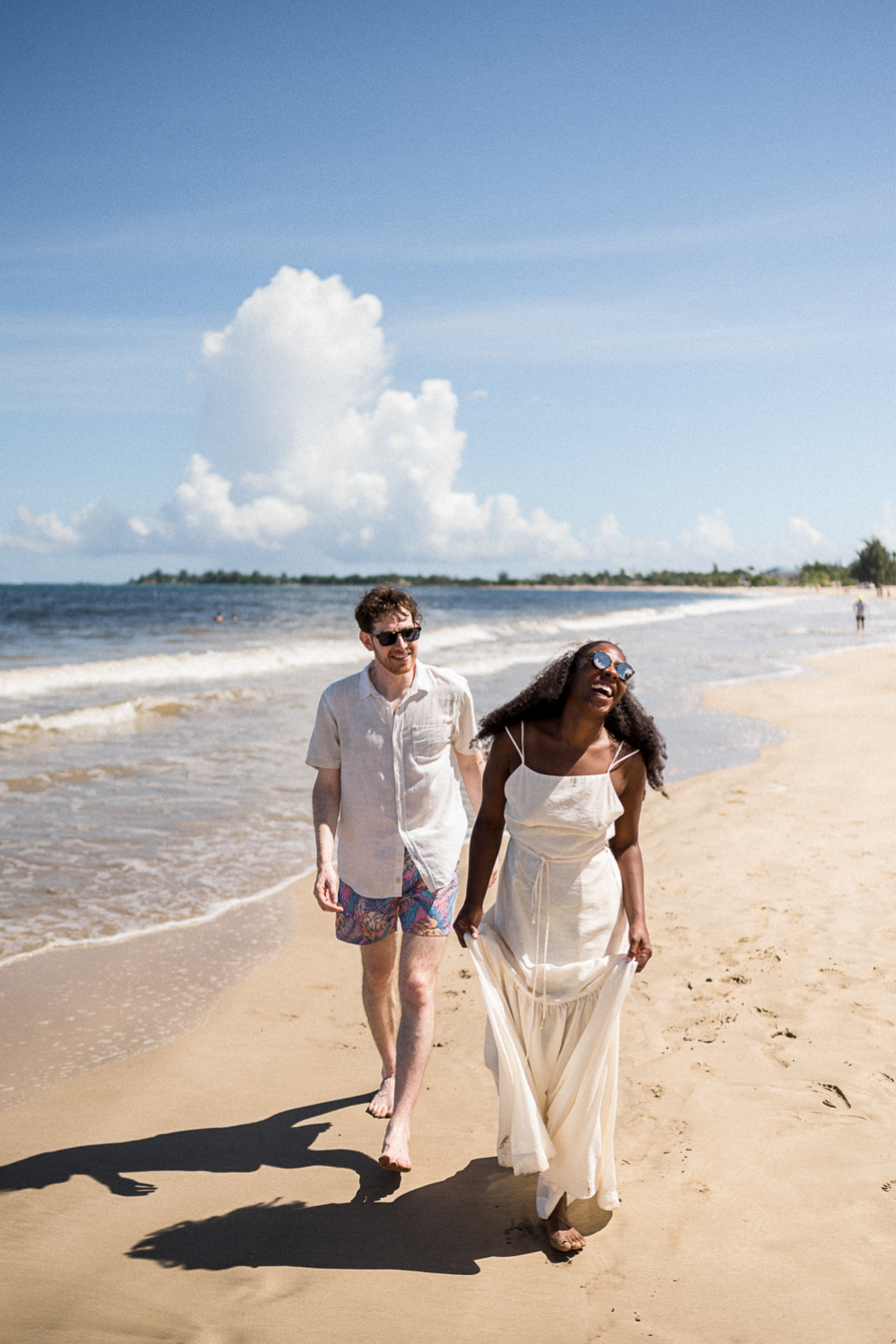
Should I Charge a Travel Fee for Portrait/Wedding Photography?
November 24, 2022.
If you’re confused on when to charge travel fees, and how much you should be charging to travel for photoshoots and weddings, this post is for you! Today we’re answering another common pricing question: “Should I charge travel fees for my photography?”

Should I Charge a Travel Fee?
Travel fees are one of the most common and hotly-debated questions when it comes to pricing for wedding and portrait photographers. And the TL;DR of this entire video is, YES. Photographers should be charging travel fees in MOST cases. But how we think you should price those fees is what we’re going to spend most of this post discussing. But if you aren’t convinced quite yet that you should be charging travel fees in the first place, here’s something to think about: your time is valuable. Photography is a skilled profession; it’s not something that anyone can do with just a few minutes of training. So your time is valuable! Therefore, if someone is going to take up more of your time by asking you to travel, they should also have to pay you more.
Let’s use an example to get the point across. Let’s say you charge $300 for a one-hour family session. If there’s a public park that’s a 15-minute drive from your house, then you would get paid $300 for an hour of photography and 30 minutes of shooting. So $300, divided by 1.5 hours means your hourly rate is $200/hour. But what if someone wanted to hire you for that same portrait session, but they lived an hour and a half away from you? Now, you’re spending one hour shooting and three hours in the car to make the same $300. So you’re now getting paid $100/hour, instead of $200/hour.
Now, if you worked at a grocery store and made $15/hour, and one day your boss came in and said that one of your clients wanted something special from you, so today you’d only be making $7.50/hour — half of what you should be making — you’d be furious! But if you’re a photographer who is driving hours and hours in either direction for your clients, for free, you’re doing that to yourself!
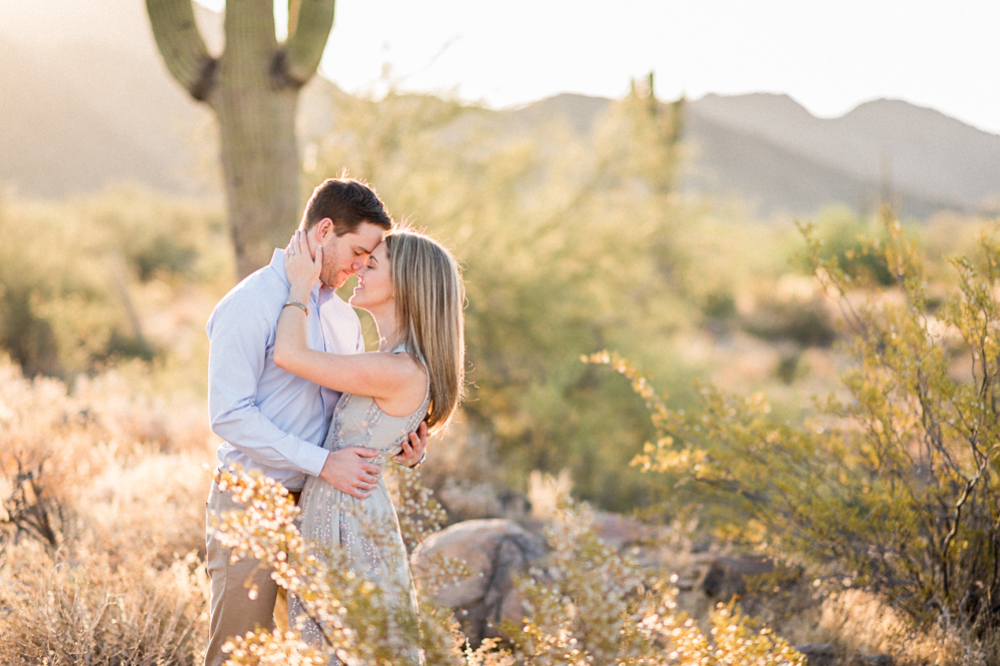
A Really Important Message!
But knowing THAT you need to charge for travel is only half the battle. The harder part is knowing WHAT to charge. And speaking of knowing what to charge, we want to make sure you’re aware that next Tuesday, November 29th, 2022 we’re hosting a live workshop called “Pricing for Wedding and Portrait Photographers: How to Know What to Charge to Get BOOKED!” Tickets are for sale right now ( at THIS link! ). And if you’re reading this post after November 29th, 2022, then a replay of the workshop is also available for purchase at that same link.
As you probably know, charging the right price for your photography is absolutely essential if you want to run a photography business that’s both profitable AND sustainable. But figuring out what to charge for your wedding and portrait photography services can feel overwhelming. We get questions from students all the time like, “How much should I charge? Should I include travel? What if they want extra hours? What if they ask for a discount?!”
So in this two hour workshop, we’re going to break everything down so that you know exactly how much to charge for your products and services, no matter where you live or how much experience you have. And we’re also going to answer common pricing questions, just like this question about travel fees! Again, the link for our workshops is here .
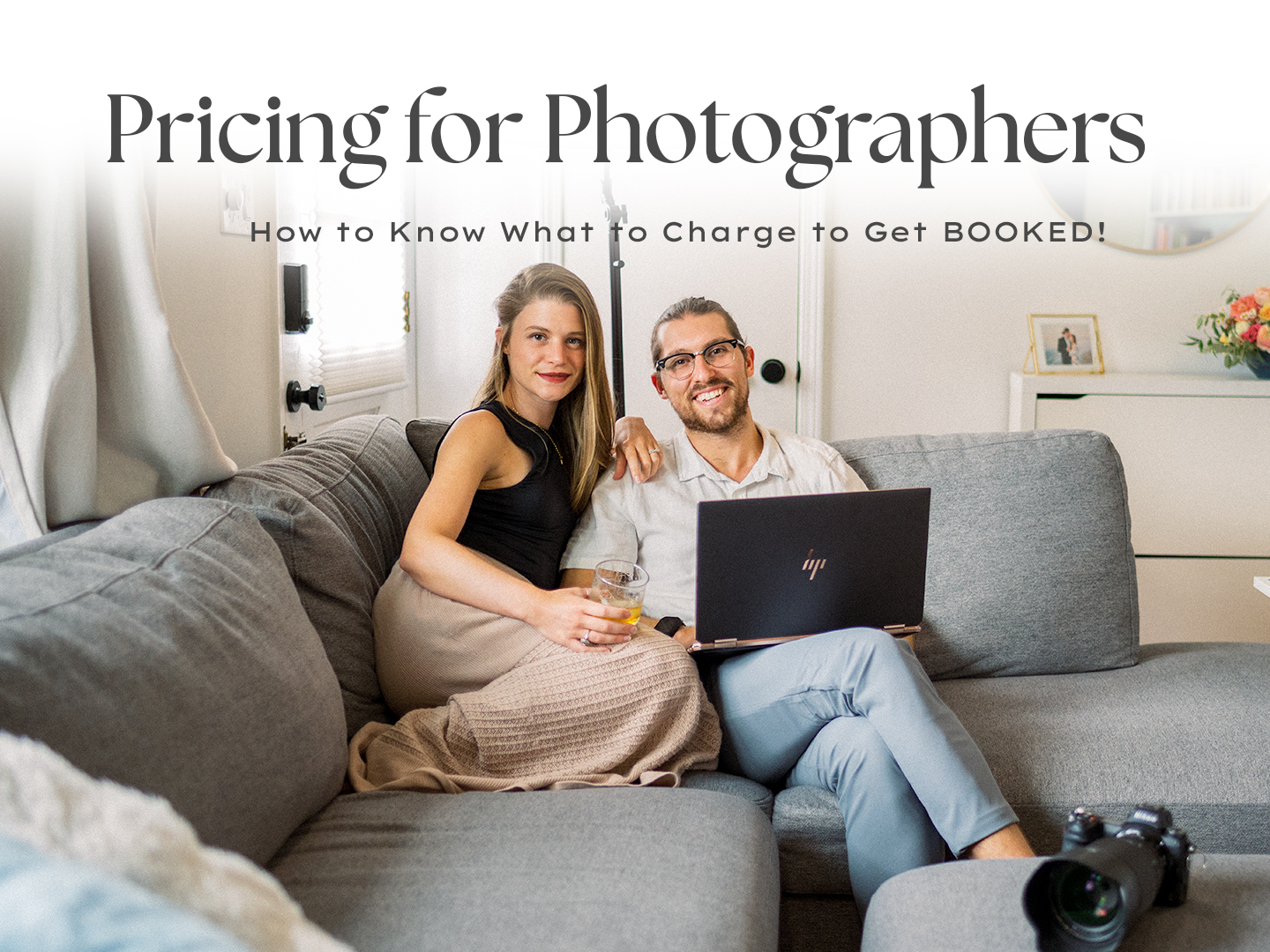
Learn more or reserve your ticket here !
How Much to Charge for Photography Travel
Jumping back into travel fees, knowing how to price a travel fee is tricky, but the most common mistake that we see all the time (that we definitely don’t think is the right move) is to charge a hard $/mile rate. So this would look like a section on your website or your pricing guide that says, “$0.45 per mile outside of 30 miles” or something like that. But here’s why that doesn’t work very well: it gives you no flexibility.
In our video last week, we talked about venue fees , and why sometime you might want to make a venue fee higher or lower, depending on how badly you want to shoot at a specific location or with a certain couple. And travel fees can work the same way! Here’s another example. There’s this location outside of Charlottesville that is SUPER popular for photoshoots, and that EVERYONE wants to have their engagement photos or family photos taken at, especially in the fall. And because it’s so popular, but is a relatively small overlook on the side of the Blue Ridge Parkway, it’s often packed with other photographers and photoshoots, and is a huge pain to shoot at. Not to mention, it’s ~45 minutes away from our house.
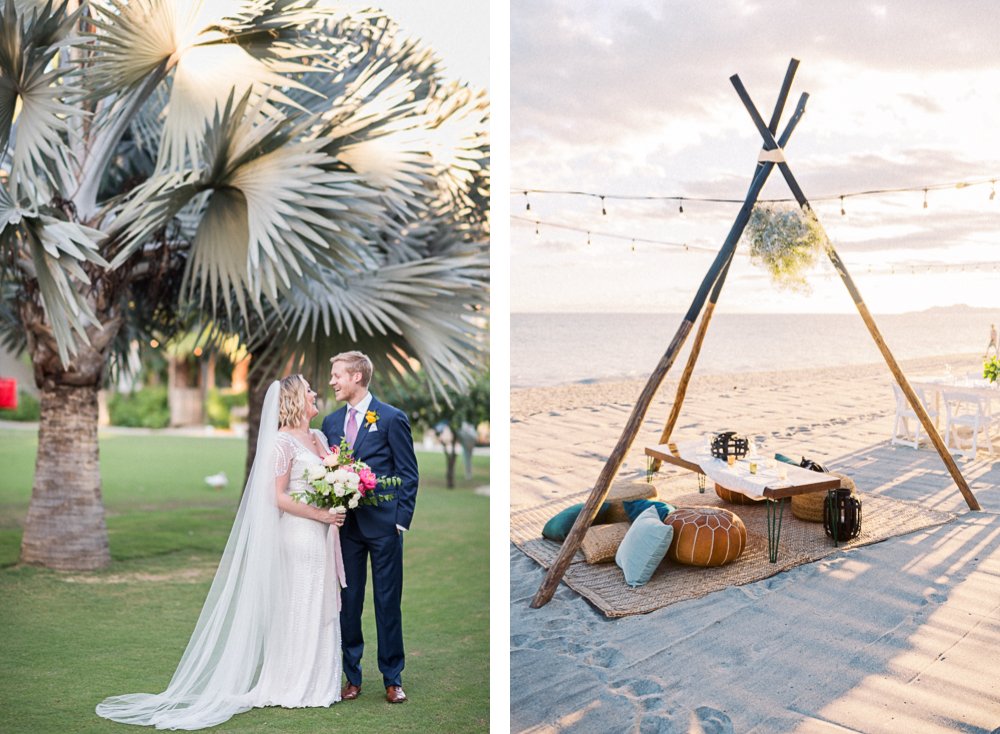
Because of those reasons, we ask for a $200 travel fee if one of our couples want to photograph an engagement session there. This serves two purposes at the same time: first it discourages couples from shooting there, which is good because we honestly are over this location. And if they really do want to shoot there, then we make an extra $200 for doing that work, which feels good to us!
So if we did a strict $/mile rate, the overlook is only 32 miles from our house, which works out to $6.25/mile. But here’s where the problem kicks in: that rate doesn’t fit every location we shoot at. We’re about 2 hours away from our nation’s capitol, Washington DC, where we genuinely enjoy shooting, and where many of our high-end clients live. Our current travel fee to DC is $300, but if we had followed that same $6.25/mile, the travel fee would instead be over $700 for a $1,000 portrait session! No one would ever hire us up to DC if it almost doubled the cost of their engagement session! But if we lowered our $/mile rate to make DC more affordable, then that overlook we don’t like shooting at would only have a $75 travel fee, and we’d end up shooting there way more often than we like.
Do you see the problem? A hard and fast $/mile is honestly just really limiting. And one of the beautiful things about running a photography business is that you’re your own boss and get to set your own prices. So set them in a way that makes more sense for you and your business!
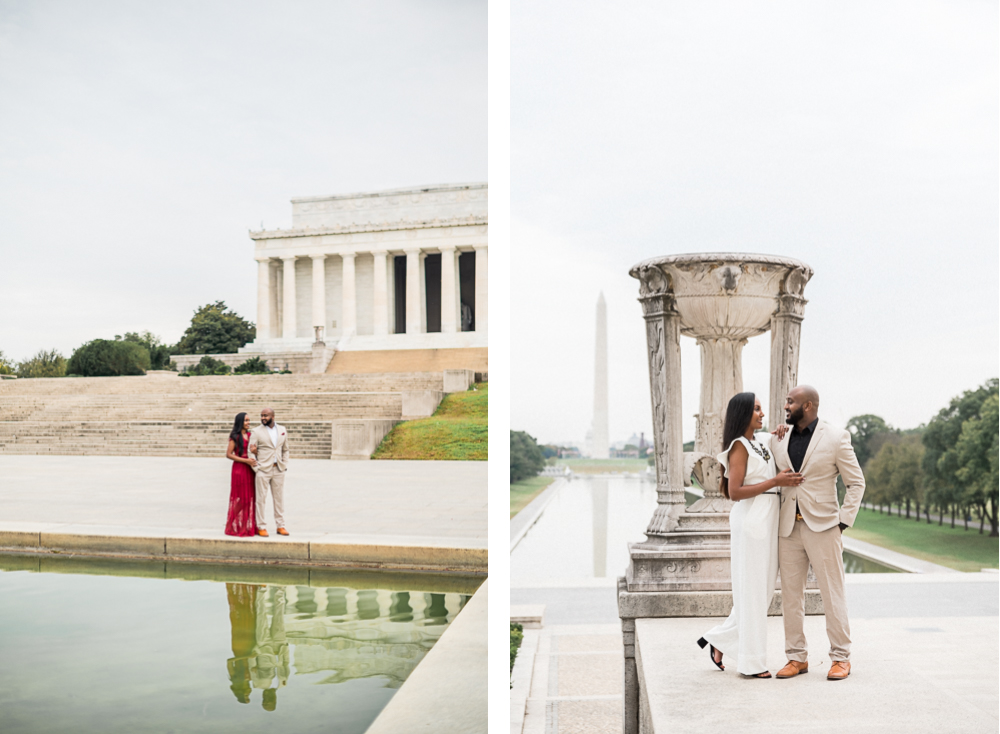
Our Intuitive Pricing Method aka “No Ragrets” Pricing
That’s why, rather than a strict $/mile travel fee, Sarah and I use what we call “Intuitive Pricing”, or sometimes “No Ragrets Pricing” 😂

This basically means that we price our travel fees on a case-by-case basis, factoring in what the job is, how badly we want to shoot it, when it is and how busy we expect to be at that time, if we want to go to that location for other reasons, and even what time of year it will be when we go there. And here’s why this is helpful, especially for weddings: not all locations are created equal! Two wedding venues that are both 90 minutes away may require the same amount of time for us in the car, but if one of them is a gorgeous venue that we’ve been dying to shoot at, and the other is a place that we hate driving too, we may charge a higher fee for the venue we don’t like.
Or let’s take a more extreme example. Let’s say two different couples reach out to us about flying halfway across the country for their weddings. One wants us to fly into this tiny town in the middle of nowhere. The weather isn’t going to be nice, there’s not much to do in that town, and travel is going to be a nightmare. Meanwhile, the other client wants to fly us to a tropical destination that we’ve always wanted to go to. You better believe that we’re going to charge a higher travel fee to go to the middle of nowhere than we are to go to tropical paradise!
Why? Because just like with that engagement session location we don’t really like, we charge more so that if we DO book the job, we at least get paid more to make up for the fact that we’re traveling just to work, and we need to cover all of our expenses. But with the other job, maybe we’re okay if we don’t 100% cover our expenses, if we know we’ll really enjoy the trip more while we’re there. But if we charged the same low travel fee for both trips and the first couple booked us, we’d definitely have a few regrets.

This is actually exactly what we did with the wedding we photographed in Puerto Rico last month ! We photographed this couple’s engagement session, and they totally fell in love with our work and how we interacted with them from behind the camera. So when the time came to discuss their wedding, and they told us they were getting married in Puerto Rico, we only charged them about $500 extra beyond our typical wedding coverage.
If we had stuck with our $6.25/mile rate, we would’ve had to charge a $9,000 travel fee on a $6,000 wedding package, so of course we wouldn’t have booked that wedding! And in fact, we knew that our expenses for flights and hotel and food would probably be $2,000 – $3,000. But we also knew that we were already near the top of their photography budget, and we also knew that we’d turn that 3-day wedding weekend into a weeklong trip in Puerto Rico, and STILL make a few thousand dollars while we were at it! No regrets there!
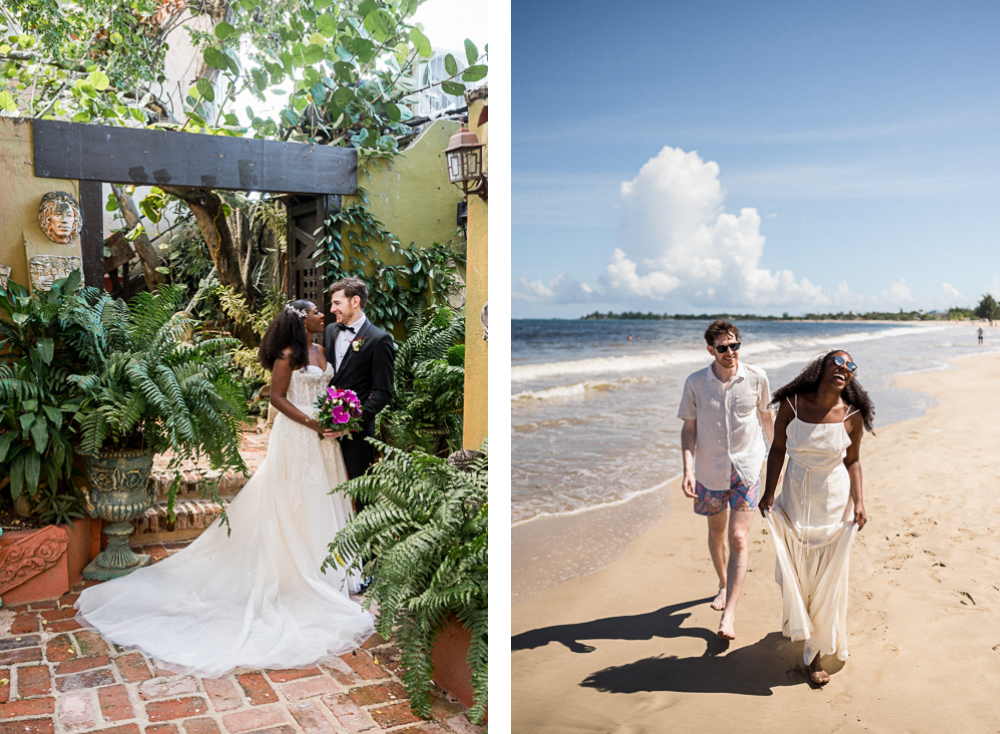
Won’t My Clients Be Upset?
The one lingering emotion our students usually have is guilt. “what if my clients get upset when I ask for a travel fee?” or “what if they want a location that’s really special to them and can’t afford my travel fee?” or even “what if they refuse to book me if I charge a travel fee?” These are a couple of questions we get and we will go more in depth during our Pricing Workshop ( HERE ). But the first thing we want to point out is that if you don’t value your own time, no one else will. If you traveling three hours to your clients costs the same as them driving to you, of course the client is going to pick the location that saves them from driving those three hours in a car!
And if you’re concerned that the client won’t get that special location or what they want – don’t be! We all want to celebrate our clients and make them feel special. But if you work at an unsustainable pace and without compensation, your dream job will quickly become a nightmare and you won’t have the stamina to serve more couples in the long run. So long as you have locations that are free in addition to the locations that have associated fees, I doubt any of your clients will complain too much. We’ve been charging travel fees for years to some locations and have never gotten any pushback.
Click HERE to get your free copy of our eBook: “5 Essential Tips for Turning your Side-Hustle into a Full-Time Photography Business.” You’ll also be subscribed to our newsletter, so our newest content, weekly encouragement, and exclusive offers will be delivered right to your inbox!
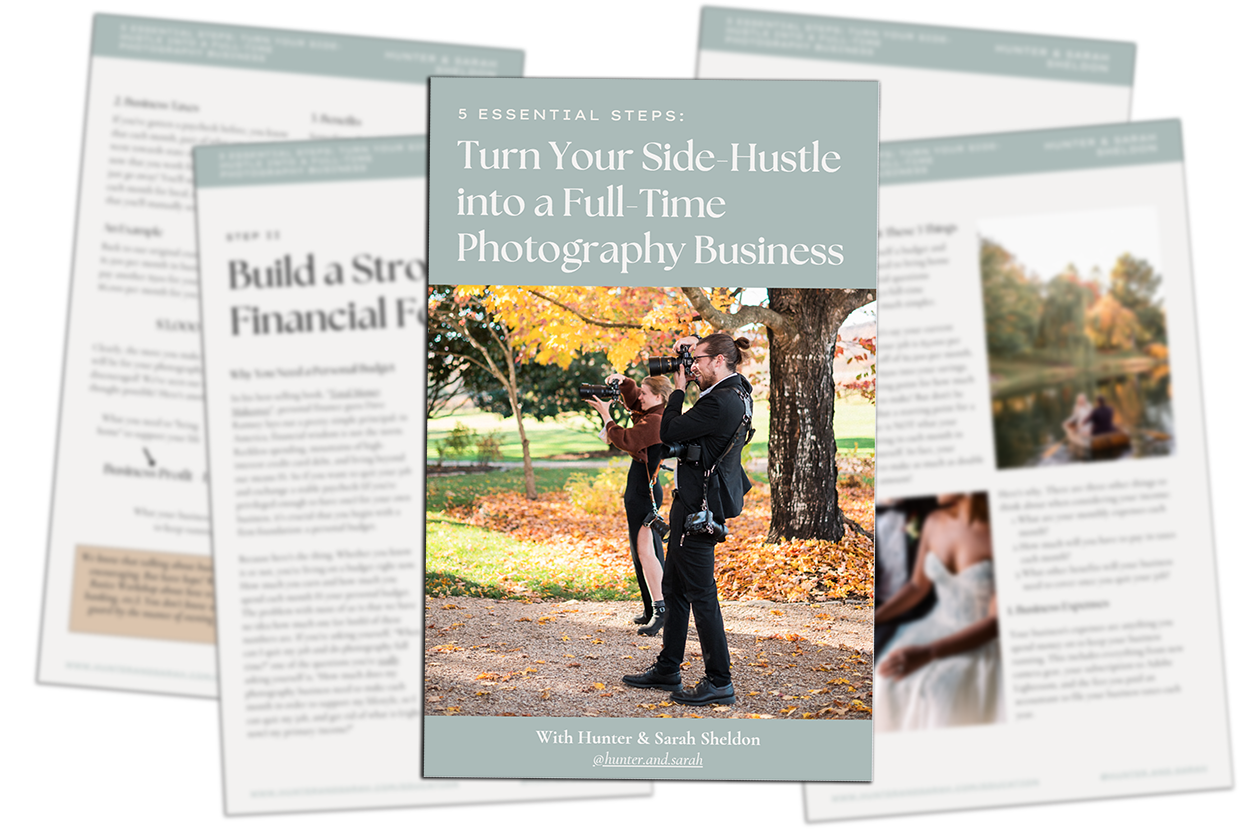
Filed in:
For Photographers
Wedding Photography & Photography Education Charlottesville, Virginia and Beyond
p. (434) 260-0902
UVA GRAD PHOTOS
Surprise proposals, follow us on instagram.
© Hunter & Sarah Photography 2023
Brand & Site by Three Fifteen Design
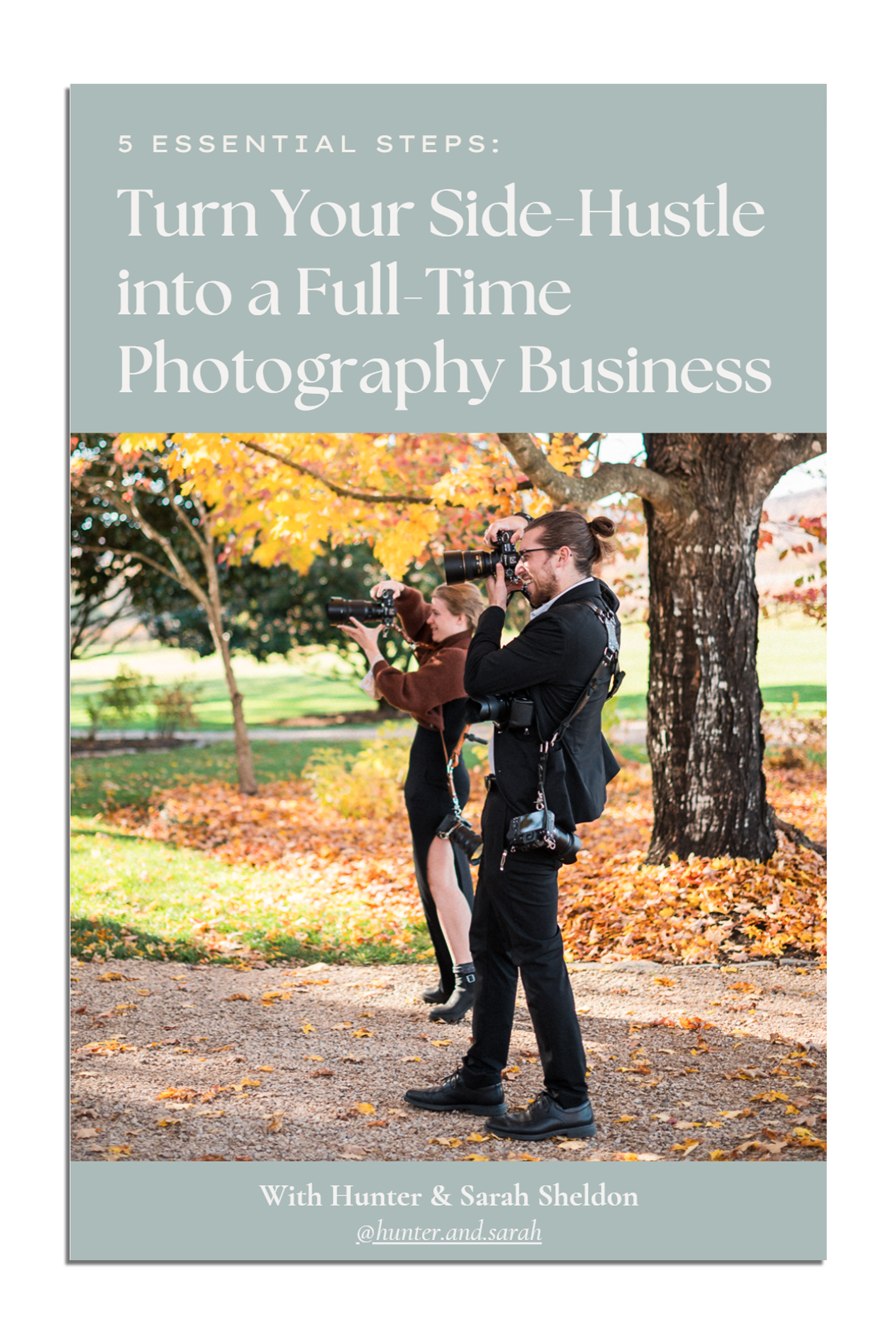
Once you enter your contact info below, you'll receive an email within minutes with a link to our free guide! You'll also be subscribed to our For-Photographers newsletter!
No thanks, I’m not interested!
How Do Wedding Photographers Charge for Travel?
Last Updated: February 14th, 2020
As wedding photographers ourselves, we can’t say we love charging people travel fees – but without them we’d really struggle to make some shoots worth our time. Few other professions will see such a large amount of traveling as that of a wedding photographer. Whether you are just traveling within your own region or to an entirely different country, travel fees help pay for your time and the costs associated with actually traveling such as car repairs, gas for your car, flights, hotels, and so on.
Given our experience charging travel fees to shoot weddings over the past few years, in this article we are going to cover some of the norms we’ve seen in the wedding photography industry, talk about best practices, and discuss what we do to make traveling for weddings make sense for us .
This post will be a perfect source of info if you’re a wedding photographer trying to figure out how to charge for travel, or a bride-to-be trying to better understand all those travel fees you’re hearing about. Continue reading for more!
Wedding Industry Norms & Best Practices for Charging to Travel
When trying to figure out how you should charge travel fees, it’s important to take a step back and take in what other photographers are doing. We’re not saying you need to emulate other photographers to a T, but it’s important to know what others are doing in order to stay competitive.
Based on what we’ve observed, any established and successful wedding photographer is going to charge to travel.
Some newcomers may be more prone to not charging, or waiving fees, in an effort to more easily secure a new client.
As a rule, you need to evaluate your specific situation as it will factor in to how you decide to approach travel costs. This is the single most important thing to consider when it comes down to any pricing you are doing.
From here, we’re going to break down some options available to you and commonly used:
Option #1: Mileage Tax Deduction
Assuming you are operating as a legal business entity (if you’re not, you should do this immediately!) , regardless of your approach to charging clients for your travel, you will want to be tracking your mileage in order to receive a tax break for the travel you are doing by car. This can be done in many ways, the simplest of which is MileIQ – which we use to track the distances driven for personal and business purposes.
In 2018, we have over $4,000 we can write off our taxes because of the amount of driving we do at the federal standard rate of .54.5 cents/mile. Doing the math, we’ve driven over 9,000 miles this year alone for business purposes – so no doubt this is a really significant thing.
By tracking your mileage and getting a tax write off, it can help you offset travel costs if you are not wanting to put these on your clients in some instances. Some photographers may opt to not charge a travel fee because this covers it, while others may charge a fee to their clients in addition to logging their mileage for a deduction.
If you want to learn more about MileIQ, check out our review and user guide . You can also sign up and try it now for free, and if you decide to upgrade, you can get 20% off your first year subscription by using our link .
Option #2: Charging a rate per mile OR hour
Whether you decide to track your mileage or not for tax purposes, one way to charge a travel fee to your clients is to charge a flat rate per mile or hour.
It is very common for photographers to simply charge the federal going rate to their clients (so this year = 54.5 cents/mile). This means if you have to travel to a wedding venue 100 miles away, you would charge ~$100 to cover travel expenses as the round trip would end up being 200 miles.
You can apply the same approach to an hourly travel fee. You charge 50$/hour and drive 4 hours round trip, and thus your final cost is 200$.
Option #3: Offer free travel within a limited radius & charge for travel after
A more blended approach to charging travel fees is this one, and it’s actually the way we go ourselves.
What we do is tell our clients upfront that there will be no travel fees when we need to travel within 80 miles (round trip). Any mileage over 80 is billed at .50 cents/mile.
In our experience, this is a way to meet our clients half way.
We understand that as wedding photographers our job requires us to travel (no one is getting married in our backyard – that would honestly be a little weird), but our time is worth something as well – so we charge when it becomes more of a burden on us.
Option #4: Extended travel requirements
We consider “local” shoots to be within a 3 hour radius from where we live. It’s really the most amount of time we’d be fine to be driving in a car one way before wanting to stay the night closer to the wedding location.
Anything that requires more travel than this for us ends up getting into a territory that requires more customization of our travel fee to account for lodging, food, and in some cases (like shoots across the country) – flights and rental cars.
There is, unfortunately, no one size fits all cost for these things as it’s highly dependent on the location the wedding is taking place.
To help you better see how we’d put together a travel fee in an instance like this, let’s look at the following real world example we encountered ourselves:
Example scenario –
We have a client wanting to book their wedding day with us (yay!). Their venue is two states away, and would require 600 miles of driving (round trip). This would end up taking 8-10 hours just for driving alone. This is a full work day in and of itself, and would absolutely require an added cost for us to drive all the way there and back again. Because of the distance and time required to get to the venue, we wouldn’t want to photograph a wedding for 8 hours than turnaround at 11pm and drive 4-5 hours home (it’s just not reasonable). As such, we need to charge not only for our mileage and time, but to cover costs associated with staying at a hotel nearby, and maybe even a small charge to cover some dinner/breakfast while we’re up there. This seems straightforward enough… but there’s a twist!! This client wants to have an engagement session (already included in the wedding package), but instead of somewhere local to us, they want it all the way across the country because there is that one place in Oregon that holds a special place in their heart. That’s totally cool with us, because we love traveling, but we also can’t be expected to foot the bill to travel all the way out there. As with the travel costs associated with the wedding day, we’d also be charging for the engagement session – fees will come in to cover our flights, lodging, rental car, food, etc.
As you can see in this scenario, there is a lot of really interesting things going on for a photographer who likes to travel, but at the end of the day – wedding photographers (like ourselves) need to be able to make enough money to cover costs and support themselves (we have to pay bills, you know!).
With this in mind, let us walk you through how we would approach handling travel costs for this detailed scenario (you can let us know in the comments if you’d do something differently!).
How we’d handle this scenario –
The most important factor for us when determining how much we should charge for travel is to make sure all components of travel are accounted for. It’s actually a lot more simple than it may seem at first glance. We break this down for you below.
Wedding Day Travel Fees:
Drive time/mileage costs (600 miles – 80 miles = 520 miles x .50 cents/mile): 260$
Toll/admission costs (this isn’t always applicable, but we check the free app Toll Calculator to see how much driving tolls will add up & charge admission costs at locations that require this)
Hotel stay (would need to charge to cover overnight stay)
Breakfast/Dinner: 20$ per meal
Remember: in addition to the fees being charged to our client, we are also using MileIQ to track our mileage for a tax credit.
Engagement Session Travel Fees:
Flights (would need to charge to cover ticket costs)
Hotel stay (would need to charge to cover at least 2 nights)
Rental car (would need to charge to cover car)
Meal stipend (would need to charge to cover meals)
Drive time/mileage costs (would be charged based on time spent getting to and from engagement session location(s))
As you can imagine, the cost to travel can range from quite low if relatively local, to very high if your client wants to fly you to a different part of the world.
For all our traveling needs (flights, hotels, car rentals), we use Booking.com as they often have the best rates from what we’ve seen.
Where is there flexibility?
This is especially true for new photographers trying to become more established, and who don’t always have the willpower to say “you need to pay for my travel time” to clients about to book with them . We’ve been in this position ourselves many times, and have learned ways to more effectively handle this type of situation.
As we discuss flexibility we may have, remember that this is just our personal approach – and what works for us may not work for you.
Start Here:
Before discussing travel costs with your prospective client, you need to lock down the lowest cost you’d be willing to do business with them in relation to what they are requesting.
This may be a hard number you have for anyone who inquires for your photography service, but it may very well be a number relative to each individual inquiry.
For us, travel fees are essential, but we are open to waiving or decreasing some of them if we really need some new business or our clients are already spending a whole lot on their package (such as by going with our highest wedding photography package).
There is also something to be said when our client is coming across as very reasonable and appreciative of the work we do – and while it isn’t a reason in itself to decrease costs, it is a factor we consider before making a decision.
Knowing the circumstances under which you’d be willing to be more flexible on travel fees before you’re faced with this situation will help you make clearer judgments when the time comes.
For many photographers, given how easily accessible so many of us are thanks to social media , you will likely find yourself with some inquiries involving a good deal of travel – so it’s best to be prepared!
Examples of situations where we’d be flexible to reduce or waive travel fees:
In no particular order, we’re going to highlight some scenarios where we’d be more open to waiving travel fees.
Travel to a place we want to go and can make a vacation out of.
One of our goals as photographers is being able to visit interesting locations already on our bucket list.
In the past few years we’ve traveled to Iceland , Oregon , and other really scenic places. We have some other places high up on our list including New Zealand, The Faroe Islands, Greece…(it’s quite a list honestly).
If we received an inquiry looking for our photography services in one of these locations, we’d be more open to waiving some costs associated with traveling to them – as in the scheme of things we would be able to turn our time there into a vacation, and expense some of the purchases made for business travel as a tax write off.
How much we’d reduce would depend on the specifics…
As a general rule, when traveling by air, we expect at least our flights to be covered. Lodging and rental cars tend to be more affordable, so covering this ourselves is more a possibility if we’re making a reasonable amount of money from the whole package price and get to make a trip out of it.
Our prospective client is budget conscious, but is not asking for discounts and will be booking a higher rated package.
From time to time, prospective clients will make mention of trying to keep their budget at a reasonable level, but really like our work. Often this leads to trimming things out of packages to make it work better for them (such as removal of albums, print credit, etc.).
If the first email received is just asking for a discount, it’s a flat “no” from us – but if we’ve already been back-and-forth and even had a call together, we’re more likely to be willing to work with their budget within reason.
A 40$ travel fee isn’t worth much to us if it ends up being the deterring bullet that makes a client wanting to book a $4,000 package walk away, and sometimes waiving the fee can be the thing that puts them over the edge and book immediately.
We really want to shoot the venue.
On occasion, we get inquiries for weddings to be held at venues we really want to shoot at.
Having a wedding in our portfolio at a particular place is one of the best ways for us to attract new clients in the future that have just booked that venue for their wedding.
In our own little world, one of the venues sitting at the top of our list to shoot is the one we got married at – The Pump House B&B – so any serious inquiry for that location we receive we end up flexible on travel costs in exchange for the opportunity to shoot there.
These are the top 3 reasons why we’d reduce or remove travel costs, what about you?
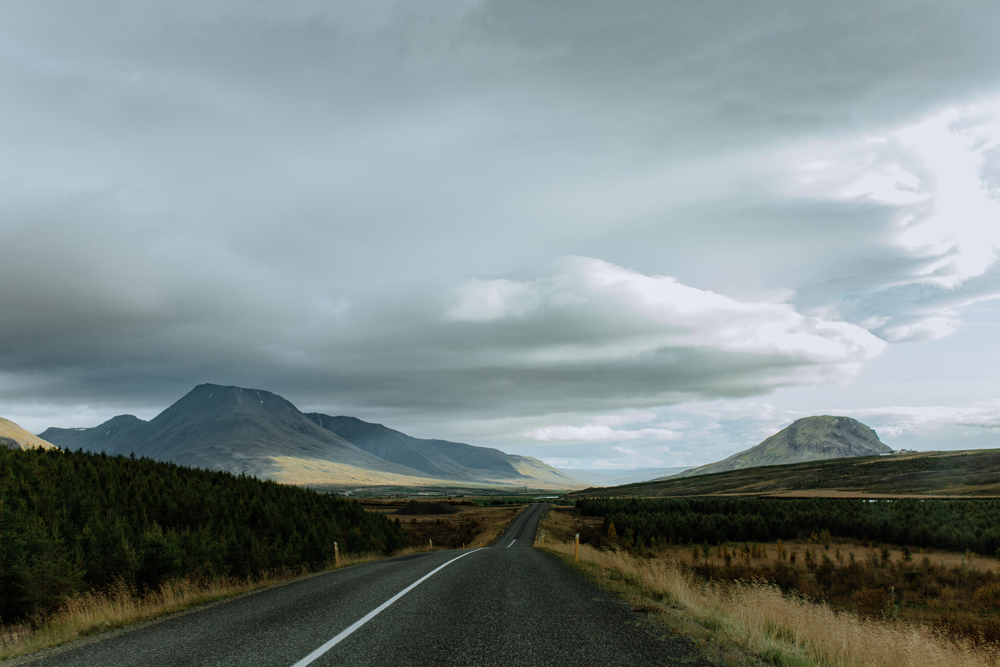
When to collect travel fee payments?
Once you’ve sorted out if you are going to charge a travel fee or not, and if so – how much, you need to make a decision about how you are going to collect payment.
A few factors that might play into your decision include:
How much money needs to be collected?
How far are you traveling?
How trusting are you of your client (or people in general)?
As a general rule, we require all travel payments to be made upfront – before we do any traveling.
This is critically important for us so we are taken seriously as professionals , and so we have costs associated with traveling already covered before we get in our car and drive for hours and hours, or in longer distance situations – step foot on an airplane.
It might seem like a silly thing, but we’ve heard many stories of photographers being okay to be paid upon arrival, but this is never something guaranteed. The only sure thing is collecting payment upfront and in advance.
Our Approach to Collecting Travel Fees
If we know the travel costs to be associated with the wedding day (or engagement session in packages that include this), we will add the travel fee into our initial contract and invoice.
In cases where we do not know how much the travel will cost, but the client still wants to book with us to secure their wedding day on our calendar – we will invoice them at a later date but before the session/wedding event occurs. At latest, we can usually square away these costs a month in advanced – and sometimes costs change if plans change (ie: bride & groom are no longer getting ready at the wedding venue, but 30 minutes away in a hotel now).
The way we collect this payment in advance is simple!!
We use Honeybook to send our invoices, and can schedule when the payments are due by .
If a client already has a current contract and invoice schedule to pay for our wedding photography service, this travel fee invoice can be associated with that document for easier reference (for both us and the client!).
If you want to learn more about Honeybook, check out our review: Honeybook – A Comprehensive Review for Photography Business Owners . If you just want to dive in and explore it yourself, sign up with this link to receive 50% off your first year.
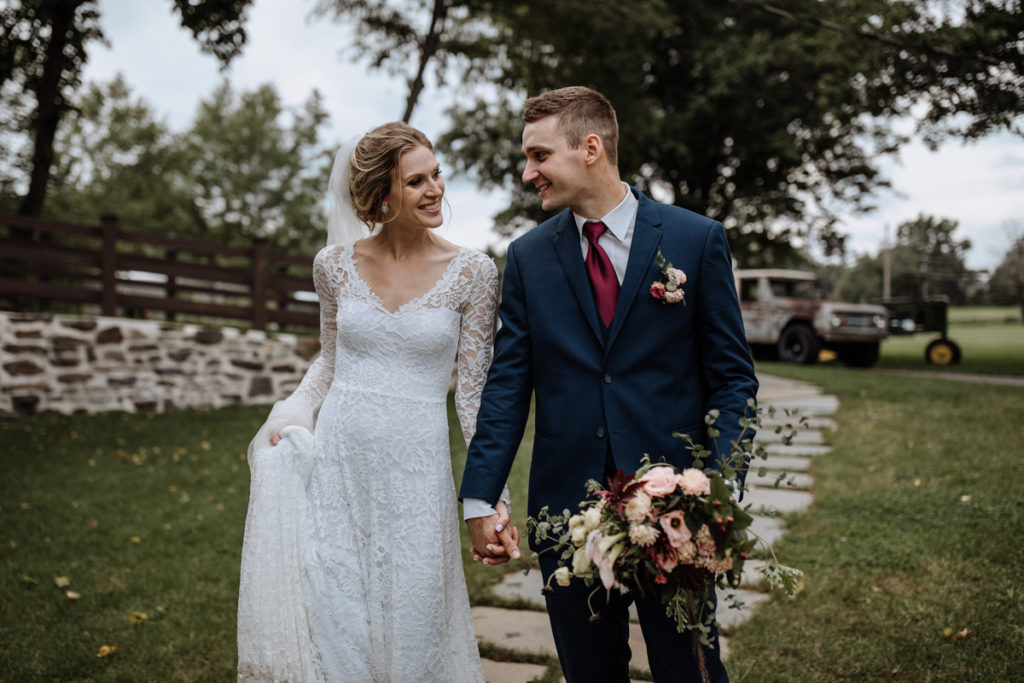
One of the difficulties we really encountered came in the form of wanting to be as upfront about costs as possible – which is why we have our pricing listed on our photography business website . While it’s maybe not unexpected, sometimes prospective clients don’t realize just how much of an impact travel costs can make on their overall costs. This is especially true for clients who are really budget conscious.
At the end of the day, whether you decide to charge a travel fee or not, you need to be sure you are earning enough money from your service to make it worthwhile for you. This is the one simple thing we keep in mind every time we have to look at our pricing, travel fees, and day-to-day finances in general , and it helps us to better make decisions – including the hard one’s like saying “no” to a prospective client wanting a discount.
You may also like
Is tipping your photographer normal, how to photograph a wedding alone – 11 tips for success, user q&a: who would be the main client for landscape photography, pic-time vs. pixieset – which is better, is photography an expensive hobby, how to use instagram search to get new photography gigs.
How much should I charge for travel as a photographer?
It is very common for photographers to simply charge the federal going rate to their clients (so this year = 54.5 cents/mile). This means if you have to travel to a wedding venue 100 miles away, you would charge ~$100 to cover travel expenses as the round trip would end up being 200 miles.
How much should a photographer charge for a destination wedding?
Destination Wedding Photographer Cost For most wedding photographers, typical prices are between $3,000 and $6,000; so just add estimated travel prices for your specific destination to get a general idea.
Do the bride and groom pay for destination wedding?
Usually, the couple is already paying for most of the expenses, so they are not usually expected to pick up the bill for their guests. It’s important for your guests to know that up-front, so they can plan their own airfare, lodging, activities, attire, and whatever else they might need for your destination wedding.
What do most wedding photography packages include?
- Photography coverage on the day.
- A second photographer.
- A pre-wedding photo session.
- A USB stick.
- A certain number of digital photographs.
- A certain number of prints.
- An online Gallery.
- A wedding album.
Are destination weddings worth it?
And while destination weddings certainly do require travel and quite a bit of logistical planning, for many couples, it’s all worth it. Nothing compares to the experience of a destination wedding, especially if you and your partner have a love for adventure.
How many photos do I need for a 3 hour wedding?
The number of photos that we deliver depends on many factors associated with your wedding, including venue, number of guests, and timing. You can typically expect to receive around 60-80 final photographs per hour of wedding coverage.
What is a good travel fee?
According to the IRS site, the allowance for business travel is $0.51/mile. If the job is 100 miles away, they will charge $51 of travel. Given 100 miles could be a 2-hour drive, it’s obviously more beneficial to charge hourly.
Do you charge clients for travel time?
Do consultants charge for travel time? Although it depends on the individual consultant, many consultants do charge for time spent traveling to client sites.
How many pictures should be expected from a 1 hour shoot?
Business Portraits & Headshots: It would generally be safe to expect to see around 15 finished images per hour.
What is the average cost of a destination wedding?
Prices depend on location, the number of days, the number of events, the U.S. dollar to local currency exchange rate, the time of year, the number of guests, and more. That said, the average estimated baseline cost of a destination wedding hovers around $35,000.
What are the rules of a destination wedding?
- Figure out who pays for what.
- Keep the guest list short.
- Give guests ample time to plan.
- Make your guests feel welcome.
- If you want alone time after the ceremony
- Give your guests key information.
What percentage of destination wedding guests attend?
“A general overall percentage between 75-85 percent of wedding guests usually attend.” The breakdown: 85 percent of local guests, 55 percent of out-of-town guests, and 35 percent of destination wedding guests will show up, Buckley said.
Do you tip photographer at wedding?
If you’re happy with the photographer’s work, etiquette experts say a 15-20% gratuity is generally appropriate. Regardless of the amount you decide to tip, it is always appreciated and above your responsibilities as a wedding client to tip your wedding photographer.
What should a wedding photographer cover?
- GETTING READY PHOTOS. Once your photographer has captured the small details attention should turn to what’s happening with the bridal party and groom.
- BRIDAL PORTRAITS.
- GUEST ARRIVAL.
- GROOM | BESTMEN | USHERS.
- YOUR ARRIVAL.
- THE CEREMONY.
How many photos should a wedding photographer deliver?
The short and simple answer is ~100 per hour of shooting or roughly 800 photos for 8 hour wedding day coverage.
What are the disadvantages of destination wedding?
- They’re not always cheaper. The overall cost of a destination wedding is cheaper than what a local wedding would be in some states—but not all.
- You may have fewer guests.
- All-inclusive packages can feel impersonal.
- Legality can be an issue.
How long do guests stay at a destination wedding?
Most often, destination wedding guests will stay on-site for a few days so that they can take part in all of the wedding activities and the big day itself. Some may decide to either stay a few more days or head to a different nearby hotel to have their own mini vacation, so this works out perfectly for everyone!
Do destination weddings save money?
Not only does a destination wedding financially cost less than domestic nuptials, it can reduce emotional costs. While there’s a certain element of planning involved, much of this can be tackled by your Wedding Specialist. Many resorts offer customizable packages, which take care of details you might otherwise forget.
Is an hour enough time for wedding photos?
WEDDING PHOTOGRAPHY HOURS: PORTRAITS We need a minimum of 90 minutes (preferrably 120 minutes) for portrait time in your wedding day. 30 minutes for family, 30 minutes for bridal party (this includes each individual side) and 30-60 minutes for the couple (this includes your individual portraits, too).
How do photographers share wedding photos?
- The old-school photo album and print packages. Yes, this still exists!
- Custom flash drives.
- Cloud services.
- Photo hosting sites.
- Mobile photo delivery powered by facial recognition.
How do professional photographers give photos to clients?
- WeTransfer well-known file-sharing systems.
- Dropbox cloud based file sharing system.
- Google Drive simple and fast file sharing solution from google.
- Pixieset specially built only for photographers.
- Smash an alternative for WeTransfer.
- ShootProof an alternative to pixieset.
How do you avoid hidden travel fees?
Pay with points at brands that waive resort fees for award stays, like Hilton and Hyatt. Ask the front desk to waive the fee. “It is probably not likely to work but you can always ask nicely,” Wolfe says. Look for a search option on a hotel website or app to “show rate with taxes and fees” or similar.
What should I charge my clients for mileage?
In 2021, the standard IRS mileage rate is 56 cents per mile for business miles driven. So I charge 56 cents per mile for any event that’s 30 or more miles away from me. I charge for mileage there and back.
Does it cost anything to use a travel agent?
How much does a travel agent cost? The cost of using a travel agent is generally marginal, and often, they won’t charge you at all. Much of their money comes from commissions the hotels and wholesalers pay them.
How do consultants bill for time?
The number of hours you billed for divided by number of hours out of the week (generally 40). Most consultancies will expect you to bill 70-95% of your 40 hours per week, depending upon the industry and your level of seniority.
Privacy Overview

student login
photography tips
business advice
Life with A&J
Weddings Portraits iPhone Students View All
Photography tips, practical inspirational resources view all, business advice , favorites published all weddings, engagements anniversaries maternity all portraits, our life behind the scenes travel & adventure view all, life with a&j, pink slip files love letters friday fun our story view all, browse by category, browse blog by category:, should photographers charge travel fees.

Recently, a photographer posted a question in a Facebook group that caught our attention. This was the gist: Should photographers charge travel fees? How much should I charge to drive a few hours outside my hometown for a portrait session or a wedding?
What happened next really grabbed our attention.
Within seconds (seriously, seconds ) — How can people respond that fast anyways? — photographers from across America and started commenting the post with their travel fees.
My fee is forty dollars!
I charge sixty!
A hundred is my max!
I don’t charge anything.
And our personal favorite…
You don’t charge anything?! You need to respect yourself! Your clients need to value you!
It didn’t surprise us that the numbers were all over the place. We expected that. Because photographers of different skill and experience levels, at different price points, from different parts of the country, in different life stages, with different financial needs are bound to charge different travel fees for an extra two hour drive.
That’s totally normal. That’s economics.
That’s also why we don’t have a standard “recommended” travel fee when photographers ask us.
Because we think why you charge how much you charge is more important than how much you charge.
You see, we’re big believers in understanding the why behind everything we do in our businesses. Why? is always where we start. You should be able to look at any area of our own life or business, ask us why we do it that way, and we should be able to give you an answer. If we can’t, something’s wrong.
So let’s chat about why you might charge travel fees in the first place so you can decide how much to charge — if anything at all. Because, at the end of the day, like anything else in business, it’s important to do what feels most comfortable for you and makes the most sense for your life and your business, instead of just doing what “everyone else” does.
To start, let’s take a look at the reasons photographers charge travel fees in the first place:
1. Traveling Costs Money
If you’re going to drive two hours for a session that you could’ve shot down the street from your house, at the very least, it’s going to cost you gas money, a drink or meal while you’re out and at least 250 miles (round trip) of wear and tear on your car, not to mention the entrance fees at a National Park or something like that. So, you might charge a small travel fee just to cover those costs and account for those expenses. Of course, your clients can always drive you, so that’s an option if you don’t mind carpooling. Personally, we prefer to drive separately, and always do, because Amy’s able to get four hours of work done in the passenger seat that we wouldn’t be able to get done (at least as efficiently) with our clients in the car.
(If you want all our tips and the exact gear we use for editing on the road, you can read that here ! You can also check out the app we use for tracking mileage here !)
If you’re shooting a wedding out of state, the expenses could be even more significant. A hotel room for multiple nights, along with a rental car and food on the road can add up fast!
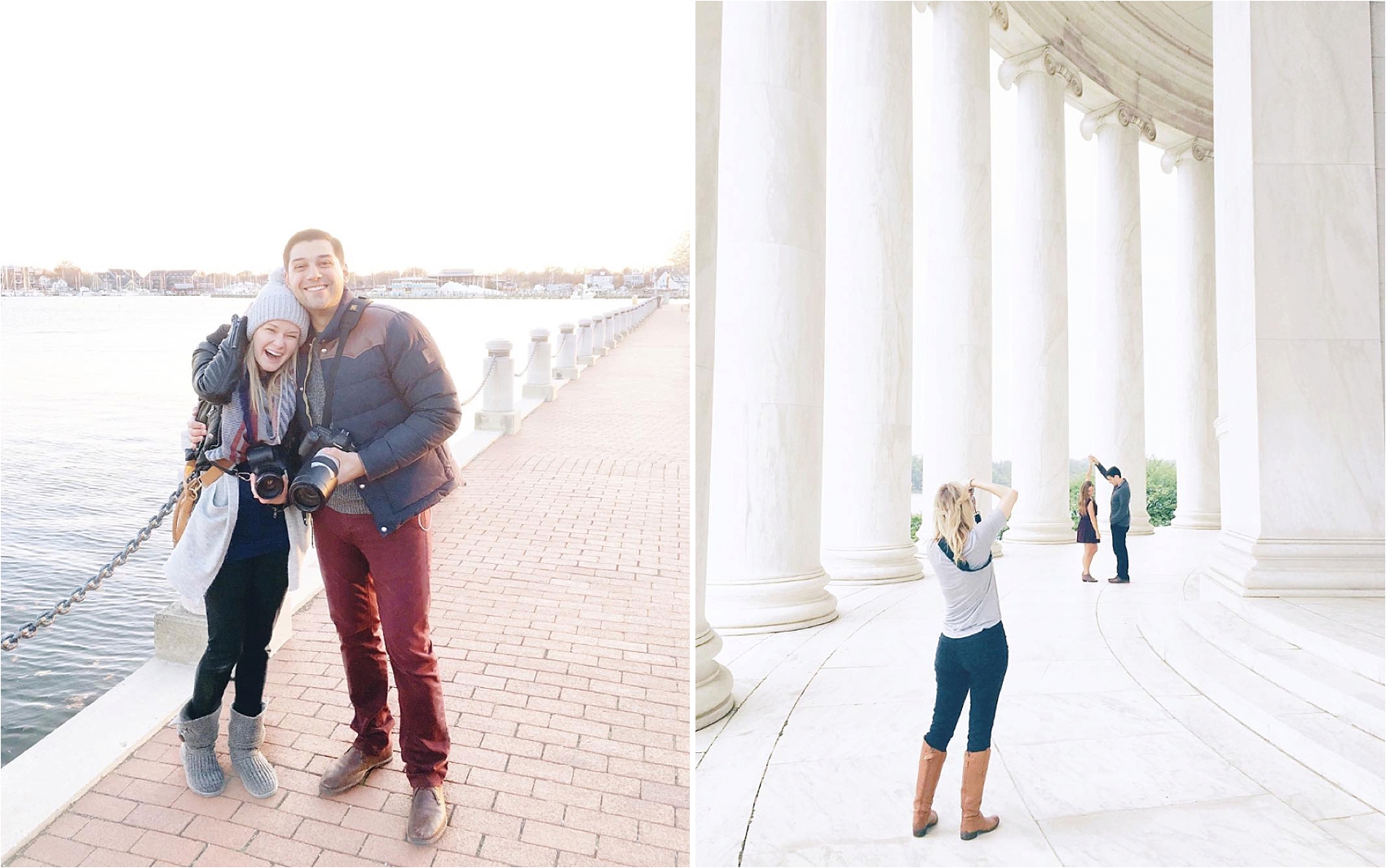
2. Traveling Takes Time
The longer we’re in business, (heck!) the longer we’re alive, we realize that time is our most valuable asset, because there’s just never enough of it. Here’s a blog post on how to save more time . So, if you’re going to commit to giving up an extra 4-6 hours to drive somewhere outside of our hometown for a session that you could’ve done (just as beautifully) around the corner from your house, charging for your time away from your office is worth it. Because you’re going out of your way for your client, and saying “yes” to them means you’re probably saying “no” to time with your spouse, kids, family, friends, building your business or just some much needed leisure time. Sometimes, in our business, when one client has a request, before deciding what to do, we ask ourselves this question: What if every client wanted us to do this? What if every client wanted you to travel for their portrait session? If each session costs you a few hours to shoot and 4-6 hours to drive round trip, you’d be giving up a full day for each client! That’s a LOT of time!
Again, if we’re talking about a wedding out of state (or out of the country!) it’s going to take A LOT more of your time than a wedding around the corner from your house. Typically, three days is an out-of-state traveling minimum so you can have a day to fly in, a day to shoot and a day to fly out.

How We Charge for Travel
Okay, now that we know why we should charge travel fees — because traveling costs us money and time — let’s look at how to decide how much to charge.
For us, it boils down to one simple question: When we think about it, how does it make us feel?
In Phoenix, Arizona (where we live), there are a few cities north and south of us where our clients sometimes want to do sessions that are each about two hours driving distance away. Before we were parents and now that we are, we didn’t decide on our travel fee based on the cost of gas or the wear and tear on the car, but simply based on what felt right for the amount of time and energy it was going to take.
We wanted to find the right balance between something that a) was reasonable for our clients to pay while still letting them know that we valued our time, and b) would make us “feel good” about doing it and not feel resentful, like we were getting a good deal and they were, too. We want to feel excited about every job, so we can ooze all that positivity and excitement onto our clients, and make their experience out of this world.
When we’re charging for destination weddings, we consider the same things. Saying “yes” to an out-of-state wedding means saying “no” to a double-header at home. We LOVE traveling and love seeing (and shooting!) new places, but we also have to be realistic about how much extra time, money and energy it takes, so that we never find ourselves feeling resentful of our own business. Instead, we want to make sure that WE are as excited as our clients.
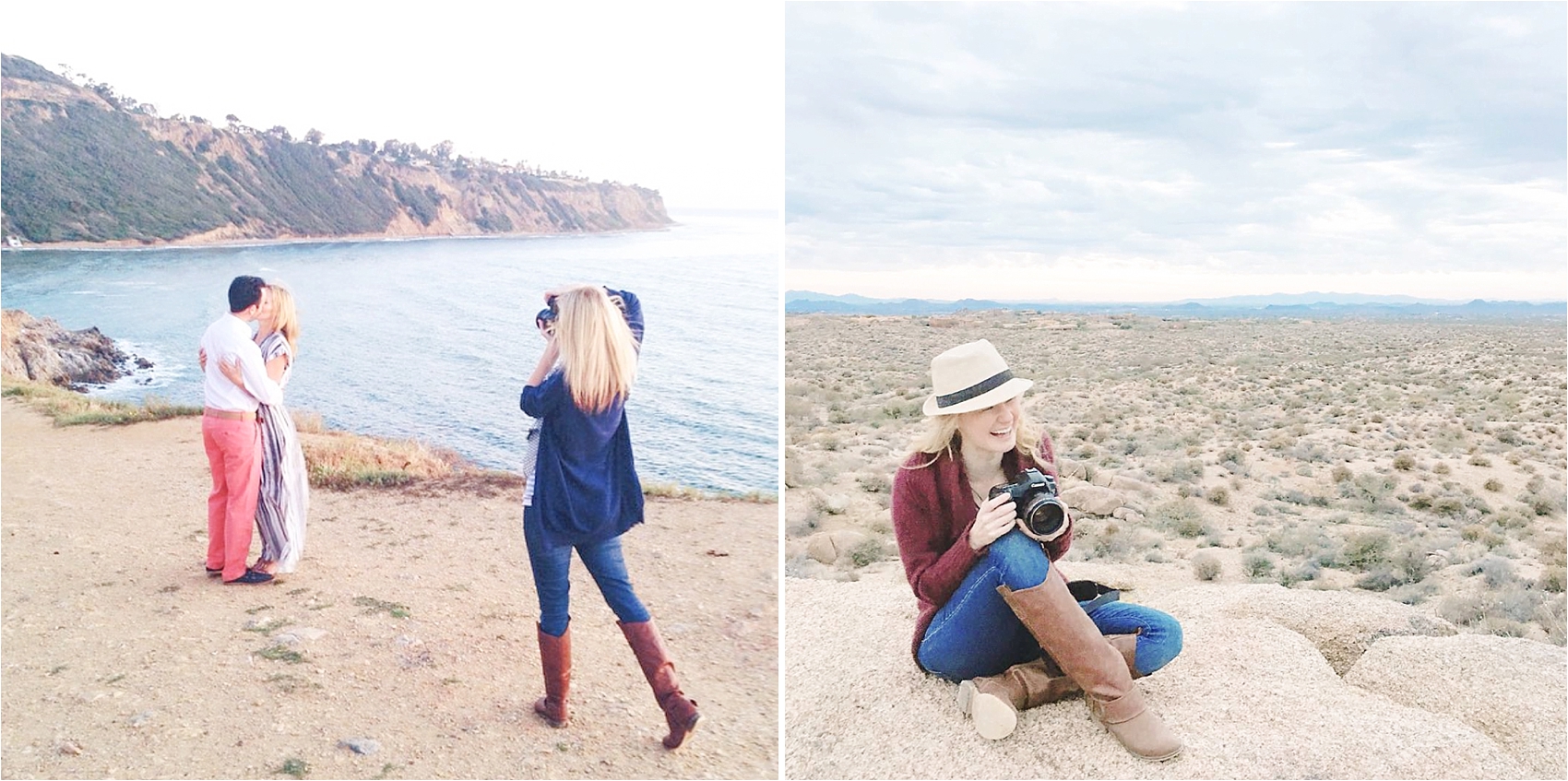
How You Should Decide What to Charge
That’s how we decide, and that’s how we recommend you decide, too, because every photographer has so many factors to consider when trying to determine whether or not to charge travel fees. You might have a brand new business and you’re looking to build your portfolio, so that might be a reason to charge less (or not at all), because you’re just so excited that your client wants to travel in the first place. You might have family or friends in a town or city a few miles away that you’ve been wanting to visit anyways. That could be a reason or motivation, too. On the other hand, you might be busy up to your eyeballs and bursting at the seams with work. That could be a reason to charge a higher fee so that when a client does want you to travel for a session, you feel like it’s worth it to drop everything and go… and while you’re with that client, you’re not thinking about #allthethings you could be doing if you weren’t with them.
On that note, in our opinion, your travel fees for the same location don’t have to be the same for every client. Wait! What? You would charge people different prices for the same thing. No, because the way we see it, no two situations are the same. No two seasons of business or life are the same. Arizona is one of the most popular winter destinations in America to visit spas and resorts, because the weather is perfect. Thus, the hotels are really expensive in the winter. In the summer, nobody wants to come here, because it’s over 100 degrees every single day. Thus, the same spas and resorts slash their prices to attract guests — and there’s nothing wrong with that. It’s smart business.
The same logic applies to our business, and should apply to yours, too, which is why the “How does this make me feel?” test is so important. If you play out the whole travel scenario in your mind, decide on a travel fee that makes you feel good about it, and if your clients agree, then do it! If they don’t agree, then just suggest an alternative location for your clients. If it’s worth to them, they’ll invest in it. If it’s not, then they won’t, but the last thing you want to do is spend a day traveling somewhere, for a travel fee you’re not excited about, when your clients would’ve been just as happy around the corner from your house.
No matter why you decide to charge a travel fee and/or how much you decide to charge (if at all), from our experience, just make sure that it’s a win-win for you and your client, because if you both feel good about it, the experience is bound to be great, and you’ll both be glad you did it.
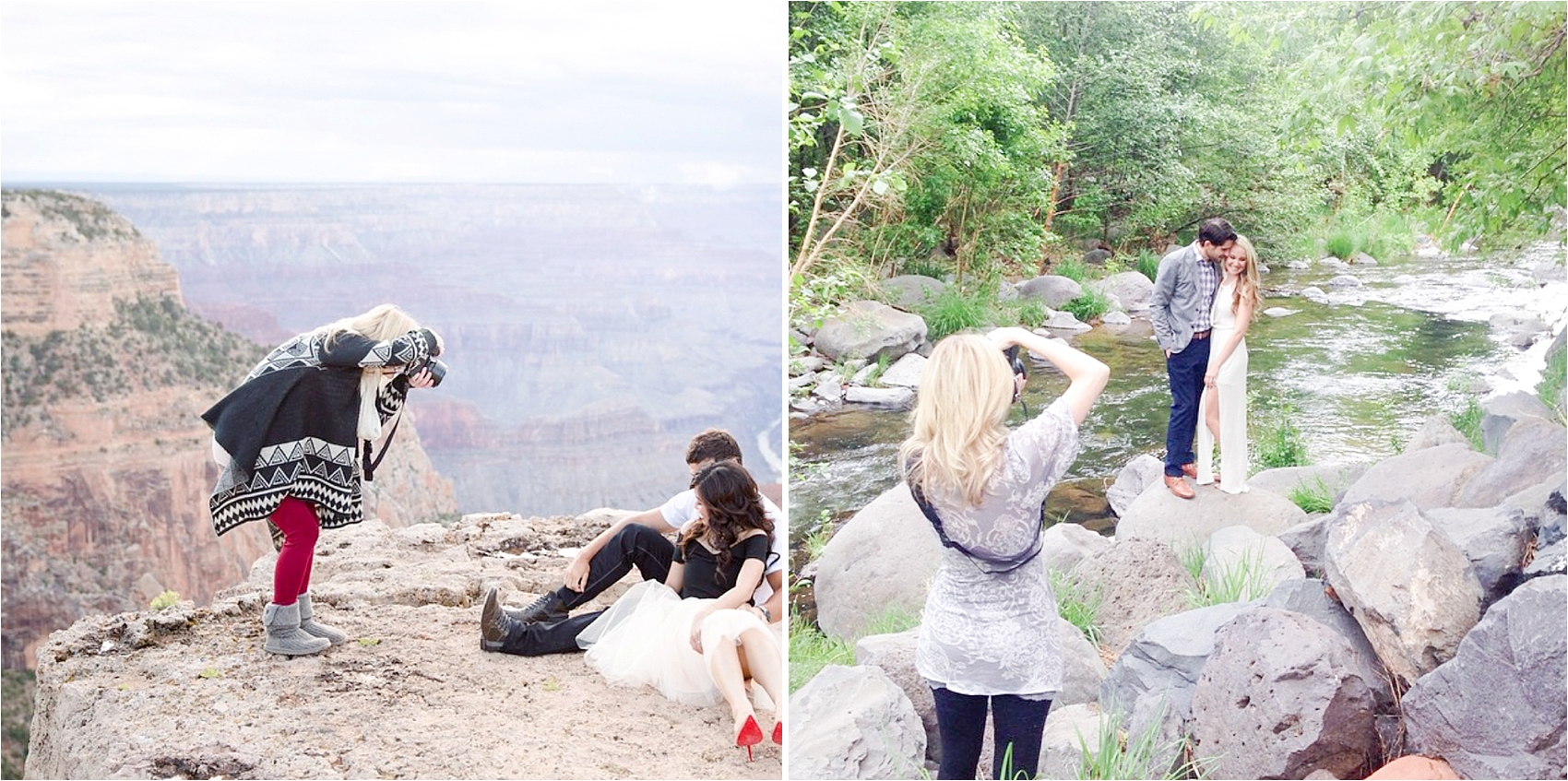
now trending

Business Advice
Pricing Advice for Photographers
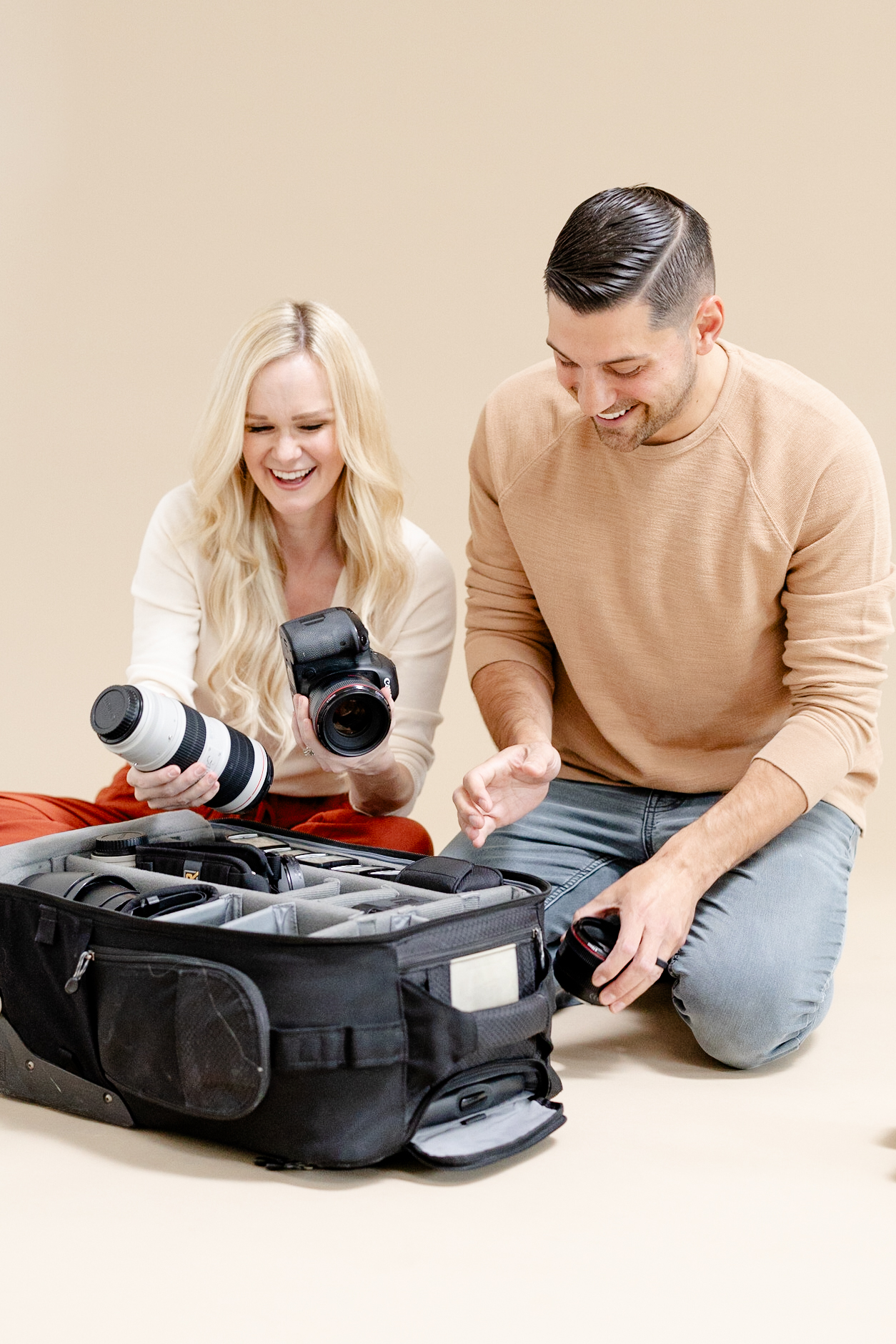
The Camera Bag We Can’t Live Without

5 Easy Posing Games for Family Sessions

Amy & Jordan
We're high school sweethearts who had no formal training in photography, but went from being elementary school teachers to making six figures as full-time photographers. We're teachers at heart (with over 30,000 online course students) and are here to help YOU take amazing photos, build a thriving business and live a beautiful life. As parents to three littles, we're all about making every minute count and love to share what we're learning along the way. We're so glad you're here!
How to Name Your Photography Business
Explore popular posts, ten go-to poses for senior boys, top 3 posing tips for shooting a maternity session .

Why We Chose Homebirth
Your guide to photographing a wedding pregnant.

Browse By Category
Photography Tips
Our Portraits
Our Weddings

The First Pose We Do At Every Session

How to Pick Where to Focus Every Time You Shoot
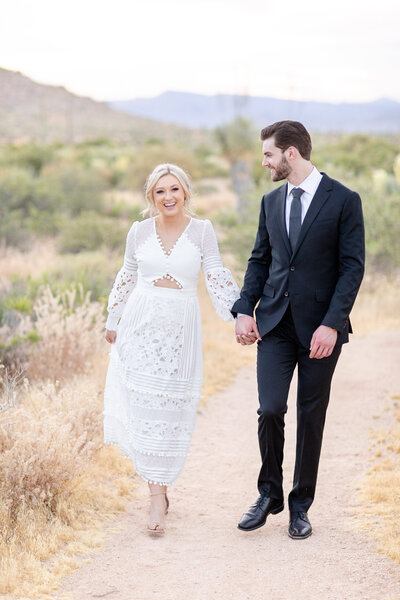
How to Choose The Right Lens to Buy Next (Prime v. Zoom)
popular posts

don't miss it!
In this free online class, we'll show you three major photo mistakes (and how to fix them) so you can take beautiful photos with whatever camera you have no prior experience required, your teachers, amy & jordan, free online photo class, learn how to take amazing photos.
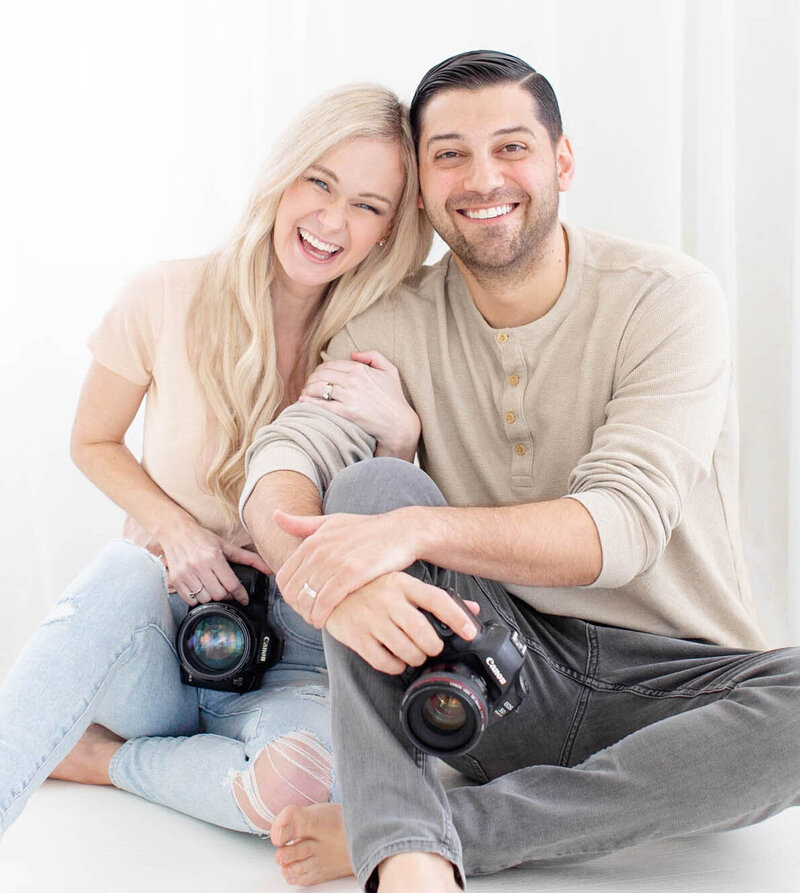
Let's connect on Instagram! Click here to find Amy on Instagram and follow along!
In this FREE online class, we'll show you three major photo mistakes (and how to easily fix them) so you can take beautiful photos with whatever camera you have! No prior experience required!
Take amazing photos, already a course member, not a student yet.
2000 Mallory Lane, Suite 130-720 Franklin, Tennessee 37067
Browse by Category:
3 major photo mistakes, free class, don't take another photo without learning the most common photo mistakes most people make (and how to fix them fast) get our secrets for amazing pics no matter what camera you have in this online photography training for free no experience required .

I don’t really know what my question is, other than how do I negotiate with this woman so that I don’t have to drive 10 hours in one weekend? The “I’ll be saving you money by not charging you my travel fee if I come Saturday” doesn’t really seem to be sticking. And for the future, I think I may need to up my travel fee (currently at $50). What do you suggest for a travel fee? – AP
A: So, even more than I love being a photographer, I love being an aunt. But I know that asking my nieces and nephews “So, what do you want for lunch?” is a bad idea. They’re not going to say “Gee aunt Jenika, how about some steamed broccoli?” They’re going to yell “ CUPCAKES! ”
So instead, I have to say “Would you like a quesadilla and carrots, or a sandwich and celery?”
The options are clear – cupcakes are noticeably absent from the list. They have to choose something that I can live with.
If the field of options is wide open, it’s only human nature to take what seems best to you, no matter the consequences. It’s better to offer concrete options that work for you.
Who knows, maybe your client has been badgering her husband for weeks to get his hair cut and he can only do it on Saturday night, or maybe she’s still wardrobe hunting, or maybe Mondays are her best hair days. Whatever the reason, when given a blank slate, your convenience won’t factor into her decision more than her convenience will.
When booking in the future, treat your schedule like a hairstylist would treat hers. She has her openings, and a client needs to make one of them work. So instead of saying “When should we schedule your session?” you could instead say “The dates I am currently open for travel are Saturday January xx at __am, Wednesday January xx at __am, and Friday January xx at __pm. My travel fee is $50, but if you choose to book me on Saturday, I will be happy to waive the fee because I will already be in town.”
That way they have to pick a time that works for *you*, and since they only have a few predetermined options, they will be more likely to pick the option with the monetary incentive.
Because I don’t know what your stated travel policies are, or what exactly you’ve already said to her regarding the date of her session, it’s hard to say what the best approach will be. If you have already said you’re available on Monday, then you may be stuck driving the extra time. It stinks, but when you run a business you have to do what you’ll say you do.
I’d rather drive an extra 5 hours than violate a stated policy or go back on what I said to a client.
If you haven’t said much to her yet, you could email her back and say “I’m sorry, I’m not available for travel on Monday. The next dates I am available for travel are ____ and ____, or of course I could come on Saturday and I’m still happy to waive the travel fee.” Ultimately, to rein her in, you’ll have to restrict her choices and give her less control over your schedule. I’d caution you against doing that if you’ve already said you’re available on Monday.
If you charge travel fees, avoid flat fees unless you specify exactly what geographical area that flat fee covers.
$50 does seem quite low for a 5 hour round trip. After you subtract gas, food, and wear and tear on your car, I suspect you’re being compensated only pennies for your time. I would update your website to say something like:
“There is a $__ travel fee for clients who live up to ___ miles away from Hometown. For clients more than ___ miles away, please contact me for a custom quote.”
I calculate my custom travel fee as follows:
Mileage to drive / miles per gallon that your car gets = Gallons of gas used.
Gallons of Gas * Current gas price (I round up, because prices fluctuate) = TOTAL COST FOR GAS
Hours driving * my hourly rate = TOTAL COST OF TIME
TOTAL COST OF TIME + TOTAL COST FOR GAS = Custom travel fee.
Be sure to keep track of gas receipts and mileage, because these may be tax deductible. When calculating your hourly rate, consider both the cost of your time as well as wear and tear on your vehicle.
I will adjust or waive my travel fee in certain situations. I recently did a session at a cabin that was a 2.5 hour drive. They let my husband and I stay overnight in their guest house, and fed us a warm breakfast before we continued on our trip. A free night in a cabin on the river and their hospitality was well worth the drive to us. Last summer I was on a road trip through the southern states, and met up with a client in a small town. We had predetermined what package they would buy when they booked the session, and they paid for the package and session up front. I chose to only charge them for the gas to drive to the location because it wasn’t far out of our way, I knew I had already met my sales goal, and had the cash in hand.
Respect your own schedule, decide when you’re available, then let the client pick from concrete options. Don’t give them the chance to just yell “CUPCAKES!” Good luck!
Keep reading:
How to vanquish your worst case scenario, selling photography to women | part ii.

Your Business Should Work For You | Interview with Elizabeth Taylor Frandsen
Q&a: how do i refuse inquiries for single images, mental health maintenance for business owners, selling photography to women | part i, 10 comments.
Just found your site via share in a photog Facebook group.. I need to be editing and have spent the past hour reading and note taking. Subscribed so I don’t miss another word! Thank you! I will take all your CUPCAKES please and Thankyou!
Thank you Cindy! 😀 I’m so glad you’ve found the blog to be useful. Thanks for making me smile, have a great day!
What about hotel stays? How do you include in the travel fee?
Hey Toni! Because I do portraits, which are relatively short shoots, I haven’t run into that issue yet. I’d just charge the client for the exact amount of the hotel, and some kind of per diem for food if I had to stay overnight. It’d be easy to find the cost of a hotel with enough notice to charge them up front for it.
Thank you so much for your articles! I’ve just started my own venture in photography and I couldn’t even begin to put a price on the information I’ve learned from your website. Pricing on anything is something that I’ve always struggled with; there are wonderfully talented photogs in my area whose prices are, even for me, unreachable so I’m trying to find a ‘happy place’ in making my own prices. I think that’s where I get into the most trouble. I know I’m not as experienced or recognized as them but I am making this my career and also have bills to pay. So I suppose overcoming that has been my biggest hurdle. But I could go on for days about that. Anywho, I’m so happy and grateful for your knowledge and time! –Kim
Why not just charge the standard mileage rate issued by the IRS? This is a much simpler way to calculate travel costs. And if you stay overnight per diem rates on food and lodging.
Hi Andy! That’s certainly one way to do it, though it might not actually cover all your costs. For example, if a photographer has to arrange for extra childcare in order to travel, that will probably put their travel costs above the standard mileage rate for the IRS. Or it may only be worth it to a photographer to travel if they earn $x for their time. Per diems are useful, as are standard mileage rates, and they will work in many cases. In others, calculating gas/per mile and figuring out their hourly rate may work. Hopefully everyone can figure out what works for them!
Very helpful thank you!!!
This was a very informative post and is certainly helping me to figure out travel costs for a quote for a wedding three hours away from home. Do you typically double the end amount to accommodate for travel back home?
Well I would include “there and back” in the original mileage and gas usage calculation – but whatever you have to do, my answer is yes, it needs to accommodate round trip.
Leave a Comment Cancel Reply

7 Ways to Set Travel Fees for Wedding Photographers (SIMPLE GUIDE!)
Business fundamentals, march 14, 2023.
As experienced wedding photographers, we’ve explored many different methods to charging our clients for our travel. Unlike many photography niches, being a wedding photographer means you will be traveling a lot for your jobs and in order to run your business effectively, you’re going to want to make sure you’re charging enough to cover your costs and make it worth your while.
Some photographers opt to only take on work close to home – which might impact how they approach travel costs.
Others may take on a larger radius from home, but just stick to their car – so we need to make sure we’re covering costs of the car and gas.
Some photographers also decide to target destination wedding and adventure elopements, which may involve really extensive travel opportunities like hopping on a flight, staying at a AirBNB, and more.
We have actually done weddings in all of these circumstances – ranging from close to home weddings, weddings in neighboring states requiring a long drive, and weddings domestically and abroad in different countries!
In this post, we’re going to talk about one of the most significant questions wedding photographers have when setting up their pricing – how do wedding photographers charge for travel?
Wedding Photographer Travel Fees Made Easy – 7 Proven Methods
Method #1 – just don’t charge for travel*.
It could be argued that it is not an outright requirement that wedding photographers charge for travel. There are plenty of circumstances we could think of that a photographer would opt to not charge travel fees such as…
- They are new and will take on a wedding gig, even if it means covering their own travel expenses
- They want to expand their portfolio to a new venue or region, and want to entice clients by waiving travel fees
In general, this type of reasoning is going to be used by inexperienced or new wedding photographers.
Going beyond this, there are a few valid reasons for not charging travel fees outright.
In the United States (and many other countries), businesses that involve travel can log their mileage and receive a tax deduction using an app like Quickbooks or MileIQ . In recent years, we’ve seen an average tax deduction of around $7,000 due to the amount of traveling we do.
Alternatively, you can also log receipts from all the times you fill up gas or have car appointments (repairs and inspections) and receive a tax deduction that way. The first method is the easiest for sure.
Other travel, such as airfaire, hotels, etc. for destination weddings and elopements can also be deducted from your taxes, saving you money.
To learn more, read our article about the 23 Best Tax Deductible Expenses for Photographers .
In addition, in some jurisdictions charging a travel fee may be illegal or otherwise regulated. In circumstances where this does exist, it typically applies to a separately billed travel fee invoice, but would not apply to simply increased costs for base services.
Method #2 – Charge an hourly or mile-based rate for travel
One of the most common ways wedding photographers set travel fees is to charge by the mile or per hour. Generally, this will apply to travel done by car.
Steps to charging per hour:
- Determine how much your hourly, non-shooting rate is
- Determine how long you will be driving (both ways!)
- Multiply your hourly rate x your estimated drive time
Steps to charging per mile:
- Determine how much your rate per mile will be
- Determine how long you will be in miles (both ways!)
- Multiply your mileage rate x your estimated drive distance
Many traveling service businesses will refer to the current IRS tax deductible mileage rate for setting their rate. In 2022, this rate was 58.5 cents per mile.
The best way to determine how much time or miles you will be spending driving is to plug in your travel destination(s) into an app such as Google Maps, Waze, etc.
Method #3 – Provide free travel within a limited radius, charge after
As wedding photographers and service providers, we are expected to travel for our work – it just comes with the territory. As a result, it can feel wrong to charge travel fees (especially for gigs nearby), and in some circumstances a travel fee can also be off putting to potential clients – resulting in a loss of business.
One solution to this is to offer travel for free within a limited radius, and only charge a travel fee for events beyond your radius.
It’s up to you to decide what this radius should look like.
Examples we have seen in the wedding industry:
- Free travel up to 3 hours
- Free travel up to 30 miles
Many years ago, when we used this strategy, we would offer weddings and sessions for free within 30 miles of our town. This would be roughly 30-45 minutes of driving. To us, it was worth getting bookings in this region without the extra headache of charging for travel. We were comfortable taking on opportunities in this proximity without charging extra.
Method #4 – Price out the cost of all travel requirements (gas for car, airfaire, hotel, etc.) and invoice client
While methods #2 and #3 can work for wedding photographers traveling by car, destination wedding photographers have different travel costs to account for.
One common solution is to simply price out all your required travel spending, then invoice your clients for the costs you are incurring.
For example, if you are based in Pennsylvania (hey! That’s where we are too!) and have the opportunity to photograph a destination wedding in Iceland…you’ll might have a cost breakdown like this:
- Airfaire: $500
- AirBNB Rental: $400
- Car Rental: $300
- Meals: $100
- Airport Parking: $50
- TOTAL: $1,350
Once you price everything out, you can take this total to your client and bill them for the costs.
Some destination photographers might even add some extra, to build in some extra profit to make it worth their while.
While this solution makes sense on paper, and can work for some photographers, we recommend against it.
This is based on our personal experience, as well as understanding that from a sales perspective – when a client sees this big price tag for your travel, they’ll look for opportunities to reduce costs.
For example – you price out airfaire for $500 because you see some flights with an airline you already like at that rate. Your client goes on an flight booking website and finds another flight for $300 – it just happens to be with a worse airline or with departure/arrival times that are rough. Still – you may have to negotiate with the client as to why they should spend that extra $200 for you to have a better travel experience.
There are other holes we could poke into this method of pricing travel as a wedding photographer, but for this post we’ll leave it here and move on to the next method.
Method #5 – Increase your package prices to cover travel, don’t charge a “travel fee”
The last way to charge for your travel is to simply build it into the cost of your wedding photography service packages.
This is a strategy we recommend when you create your own wedding packages and pricing.
Let’s look at an example from one of our wedding photography businesses to see how we increased our prices, covered travel expenses, and made a better client experience all in one go:
When we began our journey in wedding photography, we would charge clients travel fees in addition to our regular package pricing. These would be fees that kick in after 30 miles of driving. For many of our clients, this resulted in fees ranging between $20 – $100 dollars because we’d find ourselves driving between 60-100 miles.
During the following year, we looked back and found that from travel fees alone – we made around an extra $2,000 – not a ton of money, but nothing to regret. Still, we also remembered many conversations with clients talking about these travel fees – what they cover, why they are priced the way they are, and similar.
We decided to shift our pricing model so our packages covered travel costs. We raised all of our packages by $200. When we booked 30 weddings, we’d make $6,000 more to cover the travel.
This strategy made it easier for prospective clients to want to work with us, and we made more money. In fact, when we looked back on that year of earnings, we actually had less out-of-pocket travel expenses and walked away with a large profit on that $6,000 earnings.
This method has since been a staple in our business!
Method #6 – Raise your prices and charge a travel fee over a certain radius
Our current travel pricing model mixes a few different strategies we’ve covered here.
First, we have raised our package pricing to cover travel. We don’t typically charge clients a fee.
The exception is for work opportunities that are significantly out of our driving radius. Where we live – this includes travel over 3 hours away or into New York City (which is a nightmare in itself even though it’s pretty close by).
When we do charge a fee, it’s a flate rate. We don’t calculate mileage or hours, but give people a flat rate that covers our expenses and time.
We also provide our clients with options that include locations that do not require travel fees. This is particularly common with engagement sessions where there may be flexibility in the location.
Method #7 – Create multiple pricing sheets for different areas
Building on method #5, if you serve multiple regions with your wedding photography business – we recommend building out different price sheets to reflect the associated travel costs for those area.
For example – we have different price points depending on where our couple’s wedding venue is located. Local clients have one price sheet, clients in our major metro areas (Philadelphia and NYC) have different price points, and domestic/international clients requiring airfaire have a different one, too!
Should I charge for engagement session travel, too?
As wedding photographers, one area where travel fees can come into play that can be trickier to navigate is for engagement sessions.
In practice, we’d suggest following the same method you apply to charging for wedding day travel. Keeping your fee structure uniform across all of your services – so for wedding days, engagement sessions, and any other session offerings you might have (bridals, family, etc.) – makes it easier for you to remember and apply, and makes it easier for clients to understand.
One challenging aspect of engagement session travel is that this is not always something determined and locked down prior to booking for a wedding.
Having solid policies in place about how you handle engagement sessions will help you overcome travel headaches.
Some things you can discuss with your clients and even incorporate into your photography service contracts include:
- How far in advance does the session need to be scheduled?
- How far are you willing to drive for the session? Is there a limit?
- Will there be any fees for the engagement session travel?
- If so, how much and when do they kick in?
In our experience, you need to have solid engagement session policies and practices, especially when the session is booked with a wedding package. We encounter many couples who book us for a wedding that is close by to where we live (within 60 minutes much of the time), but often will request engagement photos at locations further away. Setting clear and easy to understand expectations early makes it easier to charge for travel when you need and want to!
Why do wedding photographers need to charge for travel?
There are 3 major reasons why we feel strongly that wedding photographers need to be compensated for their travel – whether that results in a fee or increased pricing.
1). Your time is valuable
It might not always feel like it, especially if you’re a new wedding photographer, but the time you spend in your car is time you are not spending at home doing what you want, hanging with your friends and family, or working on other aspects of your business-like photo editing, responding to client inquiries, and all that other fun stuff.
For many wedding photographers, it’s easy to just accept little or no extra compensation because “travel is a part of our job.” In our world, we also love much of the time we spend traveling – whether it’s long drives on backroads to a wedding venue, hanging out at the airport waiting for a flight, or listening to a podcast or our favorite music while we’re on the road.
This enjoyment can sometimes distract us from making better business decisions that allow us do to more of the things we enjoy (like travel!) on our free time.

2). You will be spending money on gas, car wear-and-tear, and more
Being more practical, getting compensated for your travel efforts is important because it will help you offset the actual costs you incur when you travel.
Traveling by car, you’re of course going to end up spending money on gas to get from point A to point B (then back to point A). As wedding photographers, we can travel thousands of miles in a year just in our cars – and that adds up to a good chunk of change spent just on driving.
Of course, since it’s our car – we also have to pay to fix it up when something happens (and something will happen, especially when you drive more than the average person). Having extra money to pay for the natural wear-and-tear on your car is a great thing.
3). Travel should give you an opportunity to make more money from your clients
By charging a travel fee, you are telling clients that you are willing to expand your service area for them with some additional compensation. As a result of expanding where you will take photos for your clients, you can price your travel to also give yourself some additional profit.
For example, if you expect that gas for your trip will cost $30, charge $50. This will give you more money to work with in case it ends up costing more (like an unexpected road detour) and more likely will net you an extra $20.
Do wedding photographers ever waive travel fees?
As wedding photographers can and should charge for travel, are there ever reasons to waive the fees we set in place?
This is a personal decision you get to make as a business owner. Everyone runs their business a little differently, and it will be for you to decide.
In our time as wedding photographers, we’ve come to different conclusions at different points in our careers.
In the past, we have waived travel fees for clients. In the early years, this might have been to make our services more affordable. It may have been to get past a client’s sticking point for not booking.
In more recent years, we’ve shifted to being more adamant about being paid travel fees when they are required. For us, this is because when our travel fees would kick in (after 3 hours), we’d be traveling extensively – typically needing to cover more gas, sometimes a hotel or B&B, and of course the amount of time we’re spending in the car takes away from other things we could be doing.
Our best practice for waiving travel fees would be this – if you are going to waive a fee that you have outlined as a policy, you should get something in return .
On the few occasions we have waived fees (prior to booking with us), we’ve used it as a negotiating tool. We’ll waive travel if a contract is signed, and retainer payment made within 48 hours. This can help solidify a booking for a larger sum, while sacrificing a small fee.
How to collect the travel fee from your clients?
If this is a new client booking a wedding package with you, we recommend including the travel fee as a line item on your invoice schedule.
If it’s a current client that you are charging a separate fee, simply send an invoice.
There are many tools available for sending service proposals, contracts and invoices. You can see some of our favorite in our list of Best CRMs for Photographers.
Final Thoughts
Having a wedding photography travel fee is a small way to help your business continue to grow and be compensated for your time and efforts getting to-and-from your session locations. Every photographer will use a different strategy for determining if, when and how they apply fees for travel – whether it’s just increasing their package prices, charging a fee per mile or hour, or some mixture of the two.

Chris is a SEO professional with a passion for helping photography businesses succeed online. With years of experience in the industry, he has a proven track record of increasing website traffic, improving search rankings, and driving revenue growth for his clients.
Be the first to comment
Leave a Reply Cancel reply
Your email address will not be published. Required fields are marked *
Save my name, email, and website in this browser for the next time I comment.
Shoot + Thrive is dedicated to helping photographers win more business! Our experts have diverse backgrounds including photography business owners, teachers, and more.

the categories
Book a free consult.
Schedule a quick call to chat with us to learn more about how we can help you. Our experienced team is ready to help you solve the current problems in your business so you can achieve steady growth well into the future!

let's change that.
Hey are you struggling to run a photography business.
subscribe here for weekly resources and inspiration in your inbox.
Get the Freebie!

INQUIRY TO CONSULT (FREE EMAIL TEMPLATES, TOO!)
Free course.
Sign up for access to the course + email templates, as well as awesome resources and inspiration sent straight to your inbox!

sign me up!
- Skip to primary navigation
- Skip to main content
- Skip to footer

Travel Fees for Photoshoot Locations
Aug 2, 2023 ·
In this blog post, we’ll explain the various components of travel fees for photoshoot locations, shedding light on how these fees are calculated and what to expect when booking a session.
Planning a professional photoshoot requires meticulous attention to detail, and one crucial aspect to consider is the travel expenses associated with the chosen location. If you are a client looking to book a photoshoot, understanding the intricacies of travel fees can save you from unexpected costs and ensure a smooth experience.

Travel fees for Photoshoot Locations are collected to cover the photographer’s expenses associated with traveling to the location. These fees include costs for fuel, vehicle maintenance, travel time, and potential accommodation if an overnight stay is required. Collecting travel fees ensures that the photographer can deliver their services professionally and efficiently while compensating for the additional time and expenses involved in reaching the desired location.
The travel fees for the photoshoot location explained
What is the mile mark before the travel fee is collected.
Once we have a location set & booked, Locations over 20 miles, the travel fee is collected, and an additional charge is applied for each mile beyond that point.
Mileage Fee
One of the primary travel expenses associated with a photo shoot is the mileage fee. This fee covers the cost of the photographer traveling to the chosen location. It is typically charged per mile and varies depending on the distance between the photographer’s studio or base location and the shooting site.
For example, if the mileage fee is $0.49 per mile and the distance from the photographer’s home to the photo shoot location is 50 miles, the client would be charged $14.50 (30 miles x $0.49). The mileage charge doesn’t begin until after 20 miles.
The mileage fee is $0.49 per mile traveled. This fee is collected at the time of booking and covers the cost of traveling to the photoshoot location.
Are Tolls & Parking included in the Mileage Fee?
No, tolls and parking fees are not typically included in the mileage fee. They are considered additional charges and may be billed separately. If the photographer incurs tolls during the journey or requires paid street parking at the location, these expenses will be added on top of the mileage fee and paid by the client or the photographer, depending on the agreed-upon terms.

Factors Affecting Mileage Fee
Several factors can influence the mileage fee. These include the location’s distance, the cost of fuel at the time of travel, and any additional tolls or road expenses incurred during the journey. Some photographers may also consider wear and tear on their vehicles when determining the mileage fee. It’s essential for both parties to agree on the mileage fee before finalizing the booking to avoid misunderstandings later on.
In cases where the photo shoot location is far enough to require an overnight stay, hotel fees become an important consideration. Hotel expenses are typically not included in the session fee and will be an additional cost to the client. The photographer may choose to stay in a hotel near the shoot location to ensure they arrive on time and are well-rested for the session.
Please note that hotel fees are not included in the session fee. If the photo shoot requires an overnight stay, the client will be responsible for covering the hotel expenses separately.
Payment at the Time of Booking
To streamline the process and secure the photographer’s commitment. Travel fees for photo shoot locations, including the mileage fee, are often collected at the time of booking. This ensures that both parties are aware of the costs involved and can plan accordingly. By handling the payment in advance, the photographer can make necessary arrangements for travel, and the client can budget accordingly.
Both the mileage fee and any potential hotel fees should be discussed. By doing so and arranging at the time of booking the photoshoot. This allows for proper planning and budgeting.
Please make sure to inquire with the photographer providing the photoshoot services for specific details. Additionally, any additional fees may apply depending on the distance and location of the shoot.

Communication and Transparency
Clear communication is vital when discussing travel fees for photo shoot locations. Both the client and the photographer should openly discuss the expected expenses, including the mileage fee and any potential hotel fees. Clients should inquire about the photographer’s travel policy and understand what costs will be their responsibility. Likewise, photographers should be transparent about their mileage fee, any additional expenses, and whether they require reimbursement for overnight stays.
Final thoughts…
Understanding the travel fees for photoshoot locations is essential for ensuring a successful and enjoyable experience for both photographers and clients. By knowing the mileage fee, considering hotel expenses, and communicating openly, clients can plan their budgets effectively. Your photographer can focus on delivering their best work without concerns about unexpected costs. A clear agreement on travel fees enhances professionalism, trust, and cooperation between all parties involved. Resulting in stunning photographs and happy memories.
Posts you may have missed
Frequently Asked Questions
What to Expect when Meeting with Your Photographer
Frequently Asked Questions About Your Session
Hey y’all!
Should photographers charge travel fees?
There are a lot of photography topics on the internet, and the ever-going discussion about travel fee for photographers seems never to end. It seems a lot of professionals can’t agree on how to handle their expenses when it comes to traveling to a remote region from their home base to tackle an assignment.

Many of them include their travel expenses on their bills. Others prefer to ask their clients for specific accommodations. There is certainly a wide variety of ways to handle these aspects of logistics.
There is a couple of facts coming out of this discussion. The first one is that traveling expenses are unrelated to the level of expertise of the photographer. The other one is that every photographer has to charge for traveling expenses regardless of the way they handle logistics with their clients.
Destination Wedding Photography Costs Money
When is time to face the music, we have to realise that moving around, costs money. Even a two-hour drive will consume gas or you need to buy train of flight tickets which is extra expences.
Basic economics should call for you to include the cost of your mobility on the bill of the job once it’s finished. If you are traveling to another country, there are two ways to handle transportation. If you run an established business and you have an expenses budget, you can travel on your dime and bill your client later.
If you are a newcomer with little capital, you should include travel expenses on the upfront payment you ask before taking the job. Keep in mind that the gig could take more than a day, so you need to arrange your lodging accommodations and charge for them as well.
Most of the destination photographers include travel fee when quoting clients before they hire them, so the client understood what he has to pay in the final.
Traveling Takes Some Time

Time plays a significant role in the effectiveness of every photographer. If you are a seasoned veteran, the chances are that you probably have made your mind on how far you are willing to go for a job. A lot of pros love to travel around, but those types of assignments take a lot of time.
For a photographer, times is money in every sense of the word. A regular photographer can book more than one wedding in a week. The longer they take on a far side assignment, the less chance they have to take jobs.
That’s why any wedding photographer travel fee should also account for the time it takes to do the job. This is especially important if the photographer has to travel to another city or another country.
Usually, I arrive at the wedding destination one day before and take one extra day after the wedding.
Anybody loves to travel, and that holds for photographers as well. A traveling gig is always an excellent opportunity to go to another region we don’t know or another country we haven’t visited. It’s also a great chance to practice our craft with new locations, new angles, and new people. Even on a tight schedule, any photographer should have a little bit of time to explore the site of the assignment and enjoy the surroundings for what they are.
How I Charge for Travel Fees?
In term of logistics, we have already discussed a few pointers about the best way to charge our customers with our traveling expenses. By now charging a fair fee is not a matter of doing so on good intentions. It’s something that needs to be done.
Once we have a clear notion about the worth of our work and the value of our time we should place a figure on it. The number should be built on two main factors: the actual costs of the travel, and how good you feel by taking the assignment.
I am including everything in a bill and have a fixed price for my destination wedding photography services , which depend on the destination country. I like my client to be informed and don’t want them to think about extra logistic for the photographer. My suggestion is to include travel and accommodation fee to the final quote when the couple contacts you for the first time.

Let’s chat more about your wedding or pre-wedding photosession.


12+ years of writing stories with light
and making the world more hopeful in the process

Cost calculator for photography travel: FAQ

“How much should I charge to travel for photography when my job is 3 hours one way?”
There are many ways to calculate the cost of your time and effort that it’s gonna take for you to travel to the client. This is just one of many ways and of course everybody has their own rate of hourly wage that is good for their family- so you can adjust the numbers as needed- depending on your vehicle, your gas mileage and the budget of your client!
If you are flying and not driving that’s a whole Nother situation with cost of flight, car rental and overnight stay/hotel/meal cost!
But just for the sake of simplicity, we are going to tackle one day jobs that you are required to travel within your state or very close to your state.

how many exact miles for your trip?
(look on Google) and write this number down!
Then find your gas mileage for your vehicle: type in your gas mileage calculator
https://fueleconomy.gov/trip/
✅ step three: get the average cost of gas in your stare
🗓Use the formula:
Number of miles/mpg x cost per gallon
For example: So let’s just say that one way is 200 miles and you have an average vehicle that does 20 miles to the gallon
So 200/20 x 3.50 = 35.00 for just gas!
❤️Also factor in your time !! Maybe 20/hour
🎉So in our example of a 6 hour round trip drive, your client will be paying an extra of 120$ for just your time and $70 just for gas, not including snacks and misc.
👏🤝Want more research? Here are some articles:
https://formedfromlight.com/blog/how-to-charge-wedding-photography-travel-fee/
https://psychologyforphotographers.com/client-qa-the-costs-of-a-traveling-photographer
Youtube Channel
student login
PHOTOGRAPHY
Resources + tools.

Hope Taylor is a photographer specializing in senior portraits serving both Charleston, SC and Savannah, GA.
HOPE TAYLOR
PHOTO + EDUCATION
at home with hope
Charging Travel for Wedding Photography Hope Taylor Education
For Photographers
Connect with me on

social media

youtube channel
Free, weekly educational videos for photographers and small biz owners! Watch now
Pour a drink and watch

let me type your welcome email!
Take the quiz.

free lesson!
My gift to you.

This question has been popping up in my Instagram stories a TON these last few weeks: “How do you charge for destination weddings?” I remember so clearly being completely CONFUSED by this topic when I was in the early years of my business. What do you charge for??? How do you know WHAT to charge? When/how do you tell your clients the travel costs involved without scaring them off?
There are so many different pieces involved in destination wedding travel, so I’m going to simplify things for you today! I’m also going to source questions from Instagram stories to be sure I’m sharing EXACTLY what you want to know 🙂
I break my “destination weddings” into 3 different categories (I’ll explain each one in a second):
“Local” (within 2 hours)
Driving Distance (farther than 2 hours)
Requires Flying
When a client inquires with me about their wedding day, they are prompted to give me their venue name ON the contact form. This way, when they inquire, I can immediately research their venue and map it from my house. 60 miles of travel is included in my wedding packages, which means there are no costs involved for any venue within 60 miles (WOOHOO!) But, if the venue is over 60 miles away, that’s where additional travel costs come in.

Once I figure out how far the venue is from my home, I will include the travel costs in my FIRST email back to a bride. It will look something like this:
“I have attached my wedding packages and pricing guide for you to review! In addition to your package price, additional travel costs are required because your wedding venue is over 60 miles from me! _____, _____ and ______ will be added to your final invoice due four weeks before the wedding day”.
Now, HERE is how I decide what to charge:
“LOCAL” WEDDINGS (WITHIN 2 HOURS):
So, local is in quotation marks because 60 miles away doesn’t really mean local 🙂 But, because 60 miles of travel is included in my wedding photography package, I consider weddings within 1-2 hours “local” to my house. For weddings that are within 2 hours of my house, clients only pay for mileage outside of the 60 miles included in their wedding package. I charge $0.57/mile (what the state of Virginia recommends). So, if the wedding is 85 miles from my house, the client pays for 15 miles (85-60) at $0.57/mile ($8.55).
DRIVING DISTANCE (FARTHER THAN TWO HOURS):
This is where the TRUE travel costs start to come in! For me, if a wedding is over 2 hours (120 miles) away from home, I require a one-night hotel stay on the night of the wedding. If it is more than three hours away (180 miles), I require a two-night hotel stay local to the wedding venue (the night before and the night of). They also still pay for mileage (just like I listed above!)
REQUIRES FLYING:
If a wedding is out-of-state and requires flying, my clients are responsible for mileage to the airport (if over 60 miles), airfare for myself and my second photographer, two-night hotel stay local to the wedding venue, a rental car and a $250 travel stipend (food, baggage fees, etc.) Whew! Personally, I PREFER to drive if I can, so I have driven to weddings as far as Ohio! This helps to lower costs, because then they are just paying mileage, but not the additional costs of a rental car and travel stipend.
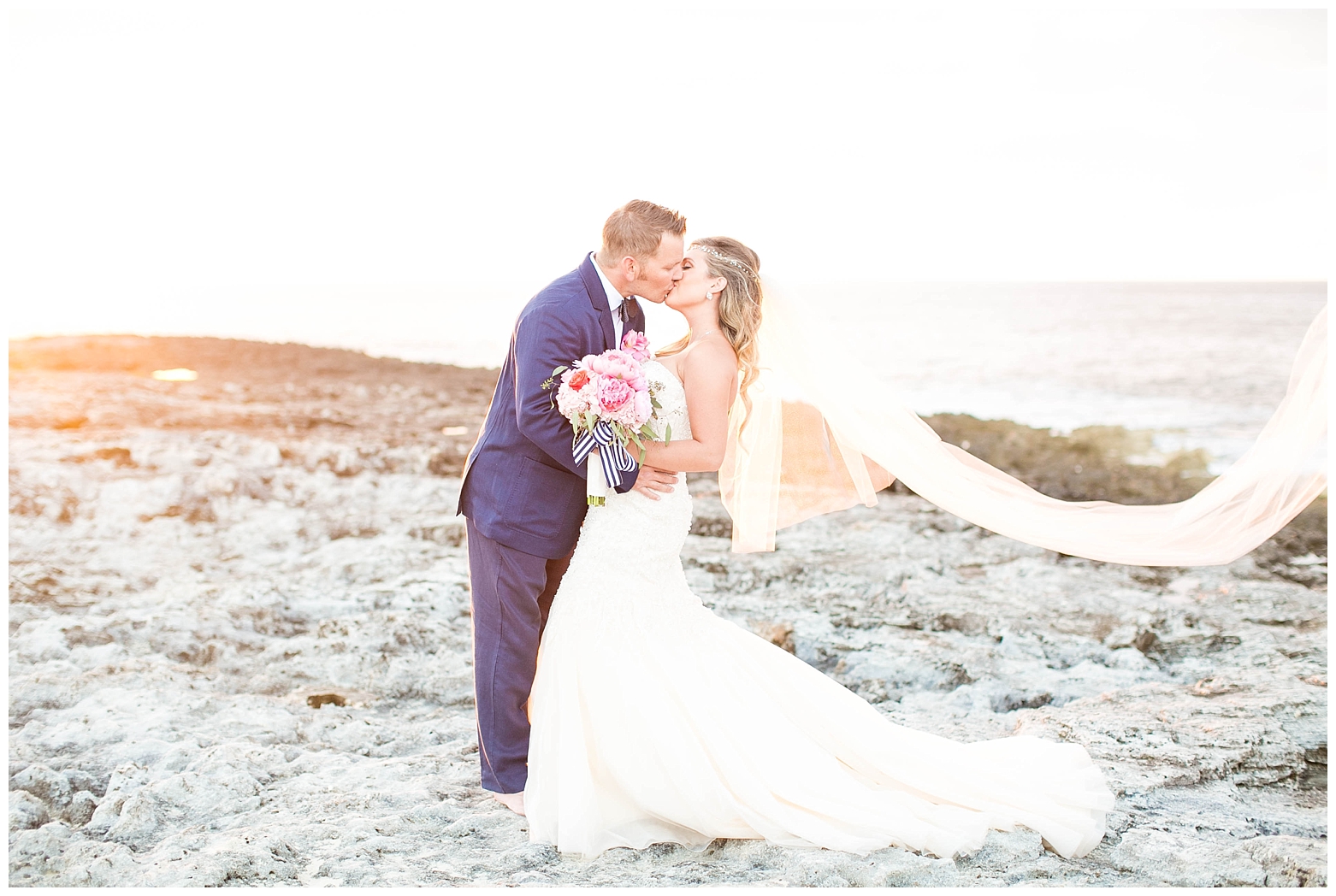
Now that you know what I require and charge my clients, here are your FAQs from Instagram stories:
Do you book the hotel or does your client/When do they pay for travel costs?
When a client books me, 50% of their package price is due upon booking, and the remaining 50% is due 4 weeks before the wedding day. When there are travel costs involved, those travel costs are laid out in a separate invoice (itemized) that is also due four weeks before the wedding. So, I book all of my own accommodations (the best price I can find within reason as far as quality of my stay – normally a Hampton Inn!) and then invoice them for the cost, as well as provide a receipt so they know exactly what I paid. This prevents me from having any “surprises” when it comes to my accommodations, and allows me to use my own military discount when booking – haha!
Do you visit the venue beforehand for weddings that are out of town?
I do not! I actually prefer to not do venue visits before the wedding day at all! This is for a few reasons, including minimizing travel when weddings are out of town. But, I have found that scouting a venue on the day OF the wedding (by arriving early enough to allow time to do so) is the most beneficial. The florals, landscaping, lighting, weather and time of year will all determine where I shoot on a wedding day – and those things will only matter on the day of the wedding. So, I don’t ever do venue tours! I just always arrive 30-45 minutes before I begin shooting every wedding so that I can scout the property and find where I will be shooting.
And, the MOST frequently asked question: Is it worth it to shoot at a lower cost/just the cost of travel to shoot a destination wedding that you really want to shoot?
This is such a big question, and the answer will be different for everyone! For some people (moms with kids, those who have full time jobs, etc.), the value of being at home is so high that shooting a wedding without getting paid is not worth the time away. However, if shooting destination weddings is something you want to grow in your business, there is value in shooting those weddings at a lower cost. But, it is OKAY to use your discretion in these situations! Just because a wedding is in a seemingly exciting location doesn’t mean that it will be the perfect fit for you.
And, my biggest piece of advice here is to shoot for the cost of TRAVELING, but make sure ALL of your expenses are covered (instead of shooting for just the cost of your wedding package). For example, if your wedding packages begin at $1200, but you are shooting a destination wedding in Italy, you will most likely end up paying more than $1200 and spending your own money just to shoot the wedding. Instead, make sure ALL of your costs are covered (mileage, airfare, rental car, food stipend, baggage costs, second shooter payment, etc.).
And, just to help you with prepping and packing for your destination wedding, I’ve put together a DESTINATION WEDDING CHECKLIST for you to help you prepare! Including what I use to PACK my equipment, links to all of my favorite tools, my entire equipment list and more! You can download it for FREE below!!!
Surprise 22nd Birthday Party!

ADD A COMMENT
Show comments.
Dear Hope, thank you so much for sharing this insight. I’ve never read a blogpost about this topic and it’s so helpful! What do you do if a client offers you an overnight stay at their home or at a friends home? I REALLY always liked staying at the brides home – it’s so much fun! If you ever have a couple planning a Europe (esp. German) Destination Wedding but can’t afford travel expenses, please remember me as I’m from Germany 😉 I’d happily shoot their wedding if we fit 🙂 haha Blessings!
« The ONE Secret to Beautiful Images & Easy Editing
2018 Alumni Retreat Recap »
I'm Hope Taylor, an international Senior Portrait and Wedding Photographer based in Charleston, SC. I'm also an educator, international speaker, and the host of multiple sold-out workshops each year!

WELCOME TO MY BLOG

happy to have you on the blog!
This is where I share my photography work, resources for photographers + a peek into my life living in the low-country. Keep scrolling for more resources!
I'm so glad you're here!
Hi, beautiful!

free download
my free senior questionnaire
Top 3 Educational Posts
Happy Hour with Hope
Free, weekly educational videos for photographers and small biz owners! Watch now

Wedding Day Breakdown: Lens by Lens

The ONE Secret to Beautiful Images and Easy Editing
My Top 3 Favorite Lighting Scenarios
Download now.
Free Download!
Hope Taylor
Online courses, learn with me.

browse by category

Top Three Educational Resources

My Free Senior Questionnaire
Free download
All free, of course.

My Entire Client Workflow in Honeybook
The One Secret To Beautiful Images And Easy Editing
BACK TO TOP
Contact HOPE
Come Watch On YouTube
Looking to grow your photography business, capture better images or streamline your workflows? My Youtube channel is the best place to find free education. Come binge-watch all the past videos, and be sure to subscribe to see new content when it goes live:
watch ON YOUTUBE

My client booking workflow with honeybook
Most watched right now:
Totally Binge-Worthy

How To: Tips for Better Senior Portraits

Client gallery delivery with cloudspot
Resources + My Favorite Things
Ever wondered what programs I use in my business? My camera gear? My must-have photography products? Maybe just my favorite outfits to wear on wedding days? I've compiled a massive list of ALL my favorite things in every category!
THE RESOURCES PAGE
Guides + programs + tools + favorites.

The ultimate travel guide to charleston, sC

Top 10 Photo Locations in Charleston, SC
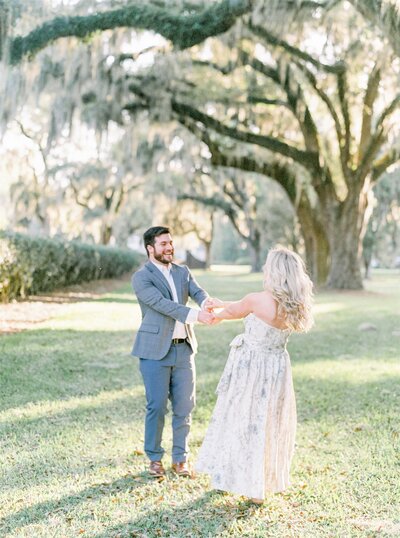
Traveling to Savannah? Here's my travel guide!
Headed Down South?
Life in the low-country.
The best place to follow along and see my day-to-day content - let's be friends!
@HOPETAYLORphotography
Hope Taylor is a senior portrait and wedding photographer serving Charleston, SC and Savannah, GA.
PHOTOGRAPHY and EDUCATION INQUIRIES
© Hope Taylor 2019 | All Rights Reserved | Site Credit
| privacy policy
The exact document that I send my clients upon booking to ensure portraits like THIS... Yep, I'm giving it away for free!
GRAB MY SENIOR QUESTIONNAIRE (MY FAVE TOOL!)
Download now.

Inspirational Photo Apr 11

Inspirational Photo Apr 10

Inspirational Photo Apr 9

Inspirational Photo Apr 8

Inspirational Photo Apr 7

Inspirational Photo Apr 6
- General Discussion | Introductions | Off Topic Forum
- Photography General Discussion
- how much to charge per mile?
- New Kid On The Block
- Followers: 8
Post #30100
- Followers: 6
Post #30101
- Followers: 4
Post #30102
Ali Stair wrote: .50 cents a mile IMO sounds pretty good.
Post #30103
West Coast wrote: Ali Stair wrote: .50 cents a mile IMO sounds pretty good.
Post #30104
Pekkea 05 wrote: West Coast wrote: Ali Stair wrote: .50 cents a mile IMO sounds pretty good.
Post #30105
West Coast wrote: Pekkea 05 wrote: West Coast wrote: Ali Stair wrote: .50 cents a mile IMO sounds pretty good.
Post #30108
- Screamin Scott
- Nikon D610, Nikon D7100, Nikon D300, Olympus OMD E-M5 MarkII, Olympus OM-D E-M10, Olympus Pen E-P3 + film SLR's
- Followers: 1384
- Posts: 6854
- Points: 39923
Post #30111
Post #30270.
arkady001 wrote: Work out how much it actually costs you in fuel, then treble it to account for tax and wear and tear/servicing costs on your vehicle. Also your time should be billable, so travelling time should be taken into account. Time spent travelling to one job is time you're not spending on another job elsewhere.
- Nikon D3000
Post #30371
- Photo Elder
- Followers: 710
- Posts: 6121
- Points: 9106
Post #30393
Pekkea 05 wrote: arkady001 wrote: Work out how much it actually costs you in fuel, then treble it to account for tax and wear and tear/servicing costs on your vehicle. Also your time should be billable, so travelling time should be taken into account. Time spent travelling to one job is time you're not spending on another job elsewhere.
Post #30411
Pekkea 05 wrote: So in theory if $40 fills my tank and I use up half, I should charge $20 for travel?
- Stealthy Ninja
- Fuji X stuff and a 1DsIII for some reason
- Followers: 982
- Posts: 16300
- Points: 6837
Post #30495
817,251 / Likes
241,000 / Followers
1,620,816 / Followers
Landscape Photography Tips
Portrait Photography Tips
Composition Tips
Beginner Photography Tips
Photo Post Processing Tips
Business Photography Tips

Latest Reviews
The Canon EOS R50 is one of the newest R-system cameras from Canon. Is it worth your money? Find out all the details you need to know in this comprehensive review.
The Sony FE 70-200mm f/2.8 GM OSS II is Sony’s flagship mirrorless zoom lens. As such, it’s loaded with features and has a top-shelf build quality that makes it a top pick!
The Leica SL2-S is an attractive, premium mirrorless camera with photo and video specs that are sure to impress. And with the legendary Leica name, you know this camera exudes quality!
The Sigma fp L is a compact full-frame camera with a 61-megapixel sensor, 4K video capabilities, in-body image stabilization, and weather-sealed construction. What’s not to like?!

Forum Top Posters
Latest Articles
Too often, affordable online printing companies don’t meet your expectations of what a print should look like. But there are some choices that combine affordability with superb quality!
Self-critique is an important component of your journey to improving as a photographer. Use these simple tips about critiquing your work as a means to make faster progress with your art.
With these easy iPhone photography tips, you can maximize the functionality of your iPhone’s camera and get much-improved results for portraits, landscapes, and any other genre!
A small camera backpack is the perfect vessel for carrying your photography kit. The problem is there’s so many to choose from! Use this guide for details on three top choices.
In the great Canon R6 vs R6 Mark II, which one is best? Is it the original, groundbreaking R6 or the mildly updated and newer R6 Mark II? Let’s dive in and find out!
With these spring photo tips, you’ll learn how to maximize the impact of your landscape shots with foreground elements. Increase depth, interest, and improve balance of your shots, too!
Smartphone photos have come a long way in recent years. With their increase in quality comes the ability to create large prints. Learn why canvas is a great option for your phone photos!
Cherry Picked!
Hand-selected articles, guides, and more from the makers of Check Cherry, designed to help your business grow and flourish.
Charging Your Clients Travel Fees [Beginners Guide]

If you travel to provide services to your clients, there is a good chance you've considered implementing travel fees. In this article, we'll cover everything you need to know about travel fees and provide some actionable advice to ensure you're doing it right.
What is a travel fee?
A travel fee is an additional fee added to your standard pricing. Often, travel fees vary based on the distance one travels. The further one travels, the higher the travel fee.
👉 Use a quality online booking system with travel fees built-in, like Check Cherry, so you can automatically calculate and charge clients travel fees. It saves a lot of time and ensures accurate billing.
Why do people charge travel fees?
If you package your services, there is a good chance you've factored some travel into your pricing. However, if a client needs you to drive 62 miles, your standard pricing may no longer be profitable. Travel fees allow you to service a larger geographic area by offering clients the option to compensate you for travel.
Should I charge travel fees?
If you're open to traveling further distances to work and leveraging packages to sell your services, you should charge travel fees because they will ensure you are operating profitably.
If you are unwilling to travel outside a smaller area or send proposals with custom pricing to each client, you might want to lump all costs into one price to ensure each booking is profitable.
👉 Travel fees give more people the opportunity to hire you because it expands the geographic area you are willing to serve.
Distance-Based Travel Fees
We often see our customers include a free travel range with all packages. For example, the first 30 miles are free, and if they must drive more than 30 miles, it's $2.00 per mile. Distance-based travel fees are outstanding because they are granular and account for time and fuel costs best.
Flat Rate Travel Fees Tiers
Some people like to charge a flat fee for travel. For example, one's travel fee structure might look like this:
0-25 miles - FREE
25-50 miles - $35 Flat Fee
50-100 miles - $125 Flat Fee
This option is much less popular. One positive aspect is you can make one tier meaningfully more expensive than another.
Round-trip or one-way?
The majority of Check Cherry customers charge one-way travel fees. If a wedding venue is 55 miles away, they charge a travel fee based on 55 miles (single trip). Another option is calculating based on the length of getting to and from the service address (round trip).
One-way calculations make it easier for the client to understand your fee structure because most clients will not think to double the distance. If you opt to charge on a one-way basis, consider increasing your per-mile fee to account for the trip back home.
On the other hand, the round trip calculation will make the per-mile fee appear lower than a single trip fee. This may be helpful during the initial sales process. Round-trip is also a more accurate representation of actual costs associated with you traveling on behalf of a client.
Should I just use the rates provided by the IRS?
Each year, the IRS releases Standard Mileage Rates . In 2022, the amount was 58.5 cents per mile. Check with the IRS or your tax professional each year and track mileage for any business purposes. Regardless if you charge travel fees or not, you can deduct the cost per mile that you travel for business. Talk to your accountant about how to do it right.
Remember that the number provided by the IRS each year is based on an annual study of the fixed and variable costs of operating an automobile. It's probably a mistake to charge clients based on rates set by the IRS.
How much should I charge my clients for mileage?
This answer will vary by market, service type, and ideal customer profile. Here are three factors to consider when calculating a travel fee:
Travel time
One of the more significant expenses is your time, and travel will effectively increase the time you need to dedicate to complete your service. If you have staff, you probably want to pay them for travel time to ensure they want to work a booking or event.
Gas prices are outrageous. Do a rough calculation to see what it goes to drive 15, 25, or 50 miles based on your fully-loaded vehicle.
Vehicle wear and tear
The more you drive a vehicle, the more it costs to own due to depreciation, interest on your loan, insurance premiums, maintenance, and repairs. Estimates can be as low as $0.21 per mile and more than $0.62 per mile. You can use this handy calculator to get an estimate for your vehicle.
Example Travel Fee Calculation
Here is an example of how one might estimate the true costs of travel.
Fuel - $0.206 per mile
Cost per gallon of fuel: $4.33
Miles per gallon of fuel: 21
Fuel cost per mile = $0.206 cents per mile ($4.33 / 21)
Wear & Tear - $0.66 per mile
5 Year Vehicle Wear and Tear = $49,515
Vehicle Wear and Tear Per Year = $ 9903 ($49,515/ 5)
Per Mile Wear and Tear = $0.66 ($9903 / 15,000 miles)

Staff Costs - $0.517 per mile
Distance to Venue: 38.7 Miles
Travel Time: 1 Hour
Hourly Rate: $20
Cost per mile = $0.517 ($20 / 38.7 miles)

Estimated Travel Fee
$1.38 per mile ($0.206 + $0.66 + $0.517)
Automatic Travel Fee Calculations
Watch how Check Cherry makes it easy to calculate and charge travel fees . You can create multiple travel zones, limit bookings outside your service area, and more.
People will ❤️ how easy it is to book you online.
Try Check Cherry free for 14 days, no credit card required.
⭐⭐⭐⭐⭐ "I love it!"
"I found Check Cherry when doing a search for something to schedule mini sessions for my photography business. It's the perfect end to end online booking and payment solution. I has made my work so much easier, and its convenient for my clients to click to select their session, sign the contract, and pay. I love it! Not to mention, their customer service is on point. Quick response time and open to suggestions. Fantastic!"
- Inspiration

Congratulations Alex Vincent! March 2024 PFRE Photographer of the Month
Congratulations Alex Vincent, March 2024 PFRE Photographer of the Month! The theme this month was "Kitchen". Alex Vincent - #906 Yvonne Raaijmakers - #909 Peter Wingfield - #902 Here's what Alex has to say: Thank you for the award of Photographer of th ...

Instant Virtual Staging with AI

Congratulations Art Ibewuike! February 2024 PFRE Photographer of the Month

Congratulations Gary Kasl! January 2024 PFRE Photographer of the Month

Congratulations to Peter Wingfield - PFRE Photographer of the Year for 2023!
Current contests.

PAST CONTESTS

Past Winners
Conference news.

What Should Real Estate Photographers Charge for Travel?
As an Amazon Associate we earn from qualifying purchases.

At what distance/mileage do you recommend charging a "travel" fee and what are the typical rates?
As far as what to charge for your mileage and time, here are some considerations:
- The US IRS says that in 2018, it will cost you on average 54.5 cents a mile to operate your vehicle for business so you should probably charge 60 cents to $1 a mile.
- You should also be charging for your time while traveling. I would charge at least minimum wage ($15/hour) perhaps more.
Of course, the other part of the travel question is what is your standard service area inside of which you don't have a travel charge? Here are some considerations for that:
- How much travel cost is built into your standard price?
- I don't think there is a single simple answer to how big your service area is.
- Your service area is going to depend on your local geography and market. I could see it being just a single city in a large metro area or many cities in a more rural area.
The main issue is you have to make sure you are not losing money when you go outside your standard service area.

- Recent Posts
- Aurora HDR vs LR/Enfuse - 18/10/2022
- What Kinds of Stabilizers Are Property Video Shooters Using? - 28/03/2019
- My MLS Is Now Claiming a License for the Photos I Upload - 27/03/2019

9 comments on “What Should Real Estate Photographers Charge for Travel?”
I charge a simple $1 per mile, each way for any project more than 30-miles from my office.
It works great and no one has objected. If it's a local but long drive, I feel compensated. If it is more than 100 miles away, the travel fee pays for a Motel 6 if I decide to rest overnight. If it is a few hundred miles (it happened once), it's enough to pay for the airfare.
As I said. It's simple. I just do a Google Maps, Directions, and pick the shortest route.
We add a mileage charge for listings that are more than a 10-mile radius of our location and our clients are okay with that.
Figure out how much you would make if you packed your day full with shoots. Even if you only have one day, it does not matter. Let's say you shoot one home a day for $150. You could probably fit about three of those shoots into a winter day, so your per day rate is $450.
Now you know if you are going to be driving half a day you should charge about $225 dollars for the driving. If $225 doesn't sound good to you, quote higher, but at least you have a ballpark figure. If that is too much for a client just mention you hope he keeps using you for the closer homes, but you can't drive half a day and lose your income.
I have a very large service area and I have broken it down into cities in expanding circles that I list on my standard price sheet. I have one standard package that consists of a nominal 20 images (16-24 depending on the property). The price to do the job gets higher as I have to drive further. The charge I list is my minimum fee for doing a job in that area. Customers are welcome to ask for more images at a fixed price each.
I started really working on how I set my pricing after my workflow wasn't changing too much and could nail down what my time per photo averaged for an entire home. I know my cost of doing business and I know what I'd like to gross per hour. The balance of the job is mostly the time and cost it takes to get there and back.
Andrew brings up an important point if you get jobs that take a significant amount of time to get to and that's how it impacts how many jobs you can do in a day. If you are typically booked fairly solid most of the time and a customer wants you to do a job where you will lose a time slot that day, you need to charge enough for it to make sense or just say no. A really good option might be that you say yes but, only if it can be done on a day when you are already going to be close or possibly where you can start very early. I was born at 2am and don't like getting up before the chickens, but I've had some very productive and profitable days by leaving for a far away job while it's still dark and getting an early start.
I've calculated my internal hourly rate for driving a bit less than my active photo rate since it doesn't generate post production work, but I don't back it all the way down to minimum wage territory. Being self-employed means that I'm paying a hefty tax surcharge for the privilege that has to be compensated for. A long day of driving would mean that I was only grossing $15/hour for half of the day and at that rate, I'll stay home and work on my portfolio and not hasten the day when I have to buy new tires.
All of the best laid plans can go out of the window when a really good customer asks for an out-of-area appointment. I have one this week that is going to kill one of my three time slots and I can only do the other appointment as it's a small home that isn't going to take very long and is just off of the freeway on my way home. I have a 2 hour drive to an 11:30am appointment that will take about 2 hours to photograph and then a 2 hour drive back if there are no accidents or road closures to contend with. That's 6 hours just to get the photos onto the memory card. I was able to make it work since I don't have a lot booked this week and it's getting towards the end of the month so I can use the money. I was able to add a bit more to cover gas and lunch, but that was about it. Sometimes you have to go to Plan B, but that doesn't mean you don't have a preferred Plan A. If I were really busy, I might have found somebody in the area with a good looking portfolio and recommended them. I hate to give up work, but I can't be cost effective if I have to travel long distances. If price isn't a big issue, I'm happy to charge for the full day with some modification since I will only be post processing one set of images rather than three. I'll even spend more time on location and chuck in a couple of extra images if it makes sense.
There are no hard and fast rules. If you are in a highly populated area and traffic, lights and stop signs can make getting across town a long trip, your trip charge will be much different than if you can drive the speed limit pretty much any hour of the day. Trip charges could also encompass parking fees and tolls. If you know that you will have to spend some time finding a parking spot and may have to lug your gear on a 15 minute walk to get to an address, that's something to consider as well. It would really bite if you had to go back to the car to get a piece of gear or feed the meter at intervals. Don't be afraid to asses a surcharge if there is construction in the area that has eliminated a bunch of street parking.
Finally, don't break out your fee for the photography and the travel as separate lines items. I had one agent refuse to pay the trip charge and the amount wasn't worth taking her to small claims over so I had to just write it off along with that customer. You are making it much easier all around if you just quote a total price to do the job since you aren't going to negotiate anything separately. If the customer wants a lower price, get them to book more work and/or consolidate photo appointments so your are doing more jobs in one area rather than driving back and forth every day.
I charge $1.25/mi (each way), for any distance further than 10 miles from my home. I get resistance, & have many opted out, but I am very busy more often than not...
I charge about $1 a minute for travel beyond about 15 miles from my office/home. If I am overnight for any reason, the client pays for motel and meals also. I am busy, people don't have to know there is a travel charge, they usually ask for a total and pay, there is no detail on an invoice. If they ask for detail or have questions, we talk about it. It is completely about missed opportunity cost. They understand. The one or two that did not understand or seemed to not like it, they just go elsewhere. I charge for photography based on time also, so I have no no issues with standing around waiting for something to get finished, installed, etc. Has worked really well.
I never say no, just how much to go on out of area assignments. That said, I have no standard charge for range. If I have to go north I will charge triple the amount than most other areas. Why, because of the environment, where it could take two hours to go 10 miles one way. Most clients understand and agree that it is hell going there. The others....well, they can find someone else. I do arrange for the agents to hide a key for access so that at least they do not have to go through the hassle of driving there to just stand around. That also frees me up to go when I want without some kind of set time.
Going out of area is a service I provide and as such it has to be profitable, otherwise why bother? Those that are just covering their costs are giving away their potential profits from a service
We cover a very large area and can drive over a hundred miles in a day. To prevent any large chunks of downtime, we stepping stone the shoots. So the day consists of a shoot, driving a little then another shot, then another short drive and another shot. Rinse and repeat. Generally we work our way out and then back home.
I charge an hourly rate beyond one hour from my office. The sometimes kills job enquiries though.
https://rickmcevoyphotography.com/
Leave a Reply Cancel reply
Your email address will not be published. Required fields are marked *
Save my name, email, and website in this browser for the next time I comment.

Learning Topics

53 Real Estate Photo Tips
Learn 50+ free tips to apply during your next shoot!
Check your inbox shortly to access the 53 tips to help with your real estate photos.
This site uses cookies. By continuing to browse you are agreeing to our use of cookies both necessary cookies to make our site work and analytic cookies to help us improve our website. Click here to learn more about our privacy policy .

IMAGES
VIDEO
COMMENTS
Travel Fee Per Mile for Photographers. When determining your travel fee per mile, it's essential to note that the general range falls between $0.50 and $1.50. However, the precise amount you should charge is contingent upon factors such as your level of expertise and skill set. Photographer Travel Fee Calculator. There are three ways to set a ...
How Much to Charge for Photography Travel. Jumping back into travel fees, knowing how to price a travel fee is tricky, but the most common mistake that we see all the time (that we definitely don't think is the right move) is to charge a hard $/mile rate. So this would look like a section on your website or your pricing guide that says, "$0.45 per mile outside of 30 miles" or something ...
It is very common for photographers to simply charge the federal going rate to their clients (so this year = 54.5 cents/mile). This means if you have to travel to a wedding venue 100 miles away, you would charge ~$100 to cover travel expenses as the round trip would end up being 200 miles. You can apply the same approach to an hourly travel fee ...
Spread the love. It is very common for photographers to simply charge the federal going rate to their clients (so this year = 54.5 cents/mile). This means if you have to travel to a wedding venue 100 miles away, you would charge ~$100 to cover travel expenses as the round trip would end up being 200 miles. Table of Contents show.
To start, let's take a look at the reasons photographers charge travel fees in the first place: 1. Traveling Costs Money. If you're going to drive two hours for a session that you could've shot down the street from your house, at the very least, it's going to cost you gas money, a drink or meal while you're out and at least 250 miles ...
I calculate my custom travel fee as follows: Mileage to drive / miles per gallon that your car gets = Gallons of gas used. Gallons of Gas * Current gas price (I round up, because prices fluctuate) = TOTAL COST FOR GAS. Hours driving * my hourly rate = TOTAL COST OF TIME. TOTAL COST OF TIME + TOTAL COST FOR GAS = Custom travel fee.
Method #2 - Charge an hourly or mile-based rate for travel. One of the most common ways wedding photographers set travel fees is to charge by the mile or per hour. Generally, this will apply to travel done by car. Steps to charging per hour: Determine how much your hourly, non-shooting rate is.
Mileage Fee. One of the primary travel expenses associated with a photo shoot is the mileage fee. This fee covers the cost of the photographer traveling to the chosen location. It is typically charged per mile and varies depending on the distance between the photographer's studio or base location and the shooting site. For example, if the ...
For a photographer, times is money in every sense of the word. A regular photographer can book more than one wedding in a week. The longer they take on a far side assignment, the less chance they have to take jobs. That's why any wedding photographer travel fee should also account for the time it takes to do the job.
Number of miles/mpg x cost per gallon For example: So let's just say that one way is 200 miles and you have an average vehicle that does 20 miles to the gallon So 200/20 x 3.50 = 35.00 for just gas!
Traveling for work as a photographer was always a HUGE dream of mine…but it's so important to quote your client for your time and travels accordingly. In today's video I'm breaking down the 3 most popular ways I see photographers incorporating travel into their pricing, and how I do it in my own business! IF YOU ENJOYED THIS VIDEO, YOU ...
That said, the US government considers $0.55/mile reasonable expense for tax purposes. You could also charge a flat fee for time based on hours. But since travel time is time you can't do anything else, a suitable amount seems appropriate. Photo Comments.
For weddings that are within 2 hours of my house, clients only pay for mileage outside of the 60 miles included in their wedding package. I charge $0.57/mile (what the state of Virginia recommends). So, if the wedding is 85 miles from my house, the client pays for 15 miles (85-60) at $0.57/mile ($8.55). DRIVING DISTANCE (FARTHER THAN TWO HOURS):
If you charge from studio to a park 20 miles away, you have to drive back too. 40 miles. GSA mileage rate is something like $0.55/mile right now. 40 miles x $0.55/mile = $22. I include 50 'free' miles because I can't be bothered to nickle & dime the client. In your case it would be from the studio.
Ali Stair wrote: .50 cents a mile IMO sounds pretty good. I do believe that is the IRS's rate when filing for your business. $.50/mile. I agree 50 cents does sound pretty good. I didn't know IRS has a say in it. lol. IRS has a say in everything.
Here is an example of how one might estimate the true costs of travel. Fuel - $0.206 per mile. Cost per gallon of fuel: $4.33. Miles per gallon of fuel: 21. Fuel cost per mile = $0.206 cents per mile ($4.33 / 21) Wear & Tear - $0.66 per mile. 5 Year Vehicle Wear and Tear = $49,515. Vehicle Wear and Tear Per Year = $ 9903 ($49,515/ 5)
As far as what to charge for your mileage and time, here are some considerations: The US IRS says that in 2018, it will cost you on average 54.5 cents a mile to operate your vehicle for business so you should probably charge 60 cents to $1 a mile. You should also be charging for your time while traveling. I would charge at least minimum wage ...
I charge for travel for anything that's more than 80 miles one way from my studio. I'm in southwest New Hampshire. I charge $2 per mile (one way) for anything beyond that 80 mile radius. So if the wedding is 100 miles away, the travel fee would be $40. If the wedding is 200 miles away, The travel fee would be $360.
For clients I do charge travel for, round trip, after a 40-mi grace period, I charge the federal mileage rate of $0.655/mi. For accounts payable clients I just charge the federal mileage rate of $0.655/mi, plus any applicable tolls and parking expenses.
Speaking as a consultant, not a photographer, I charge $200 per hour for site visits. My first 20 miles of travel is $100, (I live where 10 miles can take over an hour sometimes), 50 miles I charge $200, past that, I charge $50 for every additional 50 miles. ... Cost per mile Earnings per mile = $2 - $0.58 Earnings per mile = $1.42 ...
Client's don't like paying for travel time. I always charge more $ for the first hour of any shoot. If the shoot if far from home, the first hour just becomes even more expensive. If your normal fee is $50 per hour and you normally charge $100 for the first hour, just charge $150 for the first hour if significant driving time is involved.
For example, my company pays me expenses of £0.45 per mile business travel. I charge my clients £0.65 per mile over 30 miles (I include 60 miles free round trip in my quotes). For your example I would be charging £91 for travel.
Fwiw most experienced destination wedding photographers that I know just charge hotel for 2 nights plus flights (sometimes rental car) nothing more, but there standard wedding packages are somewhat priced to reflect them shooting no more than one wedding per weekend. Most photographers rightfully prefer booking travel and sometimes lodging ...